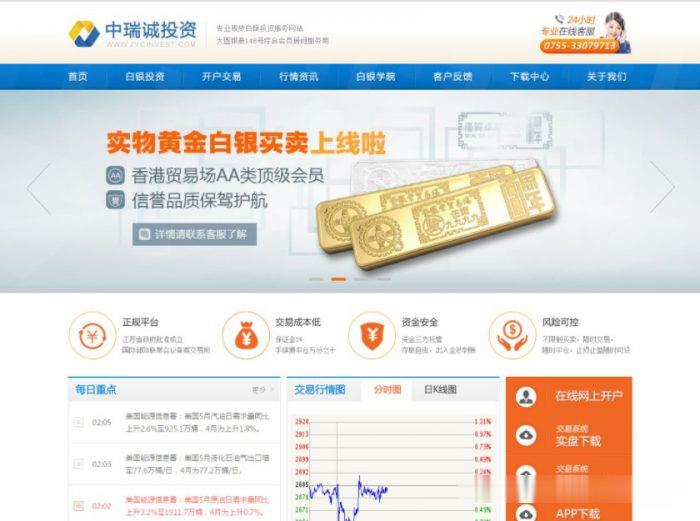analyzedwww.55fang.com
www.55fang.com 时间:2021-04-08 阅读:()
REVIEWOpenAccessRecentadvancesinrenalinterstitialfibrosisandtubularatrophyafterkidneytransplantationXiaojunLi1andShougangZhuang1,2*AbstractAlthoughkidneytransplantationhasbeenanimportantmeansforthetreatmentofpatientswithendstageofrenaldisease,thelong-termsurvivalrateoftherenalallograftremainsachallenge.
Thecauseoflaterenalallograftloss,onceknownaschronicallograftnephropathy,hasbeenrenamed"interstitialfibrosisandtubularatrophy"(IF/TA)toreflectthehistologicpatternseenonbiopsy.
ThemechanismsleadingtoIF/TAinthetransplantedkidneyincludeinflammation,activationofrenalfibroblasts,anddepositionofextracellularmatrixproteins.
IdentifyingthemediatorsandfactorsthattriggerIF/TAmaybeusefulinearlydiagnosisanddevelopmentofnoveltherapeuticstrategiesforimprovinglong-termrenalallograftsurvivalandpatientoutcomes.
Inthisreview,wehighlighttherecentadvancesinourunderstandingofIF/TAfromthreeaspects:pathogenesis,diagnosis,andtreatment.
Keywords:Interstitialfibrosis,Renaltransplantation,Renalallograftloss,TubularatrophyReviewFormanyyears,chronicallograftnephropathy(CAN)wasusedtodescribetheprogressivelossofrenalfunctionintransplantedkidneysovertimenotrelatedtoacuterejec-tion.
However,consensusbegantoformthatthetermdidnotsufficientlydescribetheunderlyingdiseaseprocess.
Interstitialfibrosisandtubularatrophy(IF/TA)describesthehistologiccharacteristicsofallograftdestructionovertime.
WhileIF/TAhascometoreplaceCAN[1],itisstillnotaspecificdisease,butapatternofinjurythathasmanyunderlyingcauses.
Thefundamentalmechanismofinter-stitialfibrosisistheimbalanceofextracellularmatrixmetabolismandabnormalaccumulationviainteractionofvariousinflammatorycytokines.
Itspathogenesishasnotbeenfullyelucidatedandexistingtherapyisnoteffectiveinimprovingrenaltransplantfunction.
PathogenesisofIF/TAPreviousstudiesindicatedthatIF/TAisalatefeatureoftherenalallograft.
However,increasingevidencehasshownthesamefeaturesofchronichistologicaldamageasearlyasthreemonthspost-transplant.
Moreover,thedevelopmentofIF/TAisprogressive,eventuallyresultinginchronicrenaldysfunction[2].
IF/TAisassociatedwithdecreasedgraftsurvival,especiallywhenitisaccompan-iedbytransplantvasculopathy,subclinicalrejection,ortransplantglomerulopathy.
Ina3-monthprotocolbiopsystudyinwhichbiopsieswereclassifiedaccordingtothepresenceorabsenceofarterialintimalthickening,graftsurvivalwassignificantlyreducedinpatientswithtrans-plantvasculopathy[3].
ThesimultaneouspresenceofIF/TAandincipienttransplantglomerulopathyimpliesashortergraftsurvivalthanthepresenceofIF/TAwithouttransplantglomerulopathy.
Moreover,itwasreportedthat10-yeargraftsurvivalwas95%inpatientswithnormalhistology,82%inpatientswithIF/TAwithouttransplantvasculopathy,and41%inpatientswithIF/TAandtrans-plantvasculopathy[4].
Inthepastseveraldecades,nu-merousstudieshavebeenconductedtounderstandthepathogenesisofIF/TAandmultiplefactorsandmecha-nismshavebeendemonstratedtobeinvolvedintheprogressoftheIF/TA,includingimmunosuppressivedrugtoxicity,antibody-mediatedinjury,andepithelial–mesenchymaltransition(EMT)(Figure1).
ImmunosuppressivedrugtoxicityImmunosuppressivedrugsarecloselyassociatedwiththedevelopmentofIF/TA.
Althoughthetargetsofimmunosup-pressivedrugsarecellsinvolvedintheimmuneresponse,*Correspondence:szhuang@lifespan.
org1DepartmentofNephrology,TongjiUniversitySchoolofMedicine,ShanghaiEastHospital,Shanghai,China2DepartmentofMedicine,AlpertMedicalSchoolofBrownUniversity,RhodeIslandHospital,MiddleHouse301,593EddyStreet,Providence,RI02903,USA2014LiandZhuang;licenseeBioMedCentralLtd.
ThisisanOpenAccessarticledistributedunderthetermsoftheCreativeCommonsAttributionLicense(http://creativecommons.
org/licenses/by/4.
0),whichpermitsunrestricteduse,distribution,andreproductioninanymedium,providedtheoriginalworkisproperlycredited.
TheCreativeCommonsPublicDomainDedicationwaiver(http://creativecommons.
org/publicdomain/zero/1.
0/)appliestothedatamadeavailableinthisarticle,unlessotherwisestated.
LiandZhuangFibrogenesis&TissueRepair2014,7:15http://www.
fibrogenesis.
com/content/7/1/15theyalsohavetoxiceffectsonepithelial,endothelial,andmesenchymal-origincells[5].
Chronicnephrotoxiceffectsofcalcineurininhibitorsmaybeassociatedwithlateallograftdysfunctionandreducedallografthalf-life.
Theintroductionofcalcineurininhibitor(CNI)therapy–firstcyclosporine(CsA)inthe1980sandlatertacrolimus–wasinitiallyhamperedbyearlydosingregimensthatledtoawidevarietyofsideeffects.
CNIcancausemicrovascularandglomerulardamage,arteriolarhyalinedeposition,tubularatrophy,andstripedinterstitialfibrosis.
Nephro-toxicityinthefirstyearpost-transplantcorrelateswiththe60%rateofsuchpathologyinCNI-treatedrecipients[6].
Theexactmechanismofimmunosuppressivedrug-mediatedrenaltoxicityisnotfullyunderstood.
Itisevi-dentthatbothcyclosporineandtacrolimuscancauserenalandsystemicvasoconstrictionthroughincreasedreleaseofendothelin-1,activationoftherenin-angiotensinsystem,increasedproductionofthromboxaneA2,anddecreasedproductionofvasodilatorssuchasnitricoxideandprostacyclin[7].
Cyclosporinecanalsocauseoxidativestressthroughuncouplingmitochondrialoxidativephos-phorylation,inhibitionoftheKrebscycle,andactivationofanaerobicglycolysisinthecytosol.
Inaddition,tubu-lointerstitialfibrosisassociatedwithCNItoxicityisalsorelatedtoincreasedintrarenaltransforminggrowthfactor-β(TGF-β)mRNAexpression[8].
TGF-βcanpromoteinterstitialfibrosisbydecreasingthedegradationandincreasingtheproductionofextracellularmatrixpro-teins[9,10].
ActivationofthemTORpathwayhasbeenassociatedwithextracellularmatrixsynthesisandrenalfibrosis.
IthasbeenreportedthatblockingthemTORpathwaywithrapamycincanreducerenalinterstitialfibrosisinanobstructivenephropathyrodentmodelbydiminishingthenumberofinterstitialfibroblastsandmyofibroblasts[11].
mTORinhibitorsalsodecreaseTGF-β1expressionandsignificantlyregressglomerularhypertrophy,mesangialfibrosis,andtubulointerstitialdamageinvariousanimalmodelsofkidneyinjuryandrenaltransplantpatients[12,13].
DespitethatinhibitionofthemTORpathwaycanattenuaterenalfibrosisinanimalmodels,applica-tionofrapamycininpatientswithCNIsdidnotresultinconsistentbeneficialeffects.
Pontrellietal.
[14]havereportedthatrapamycincansubstantiallyreduceintersti-tialfibrosisinrenaltransplantrecipients.
Gonzalezetal.
[15]demonstratedthatswitchingfromCNItosirolimusforkidneytransplantscouldalsoslowthecourseofIF/TA.
However,Servaisetal.
[16]didnotfindasignificantreductioninfibrosisafter1yearwhenpatientswereconvertedfromCNIstorapamycin12weeksafterrenaltransplantation.
Moreover,somerecentstudieshaveshowncertainnephrotoxicpotentialofrapamycinespeciallywhengivenincombinationwithhighdosesofCNIs[17,18].
Antibody-mediatedinjuryIF/TAisthecommonpathologicalfindingofvariouschronickidneydiseasesincludingchronicrenalallograftdysfunctionresultingfromantibody-mediatedrejection(AMR),whichiscausedbycirculatingantibodiestodonoralloantigensexpressedontheendothelium.
SeveralgroupshaverecentlyreportedthatglomerulitisandperitubularFigure1IdentifiedmechanismsinvolvedinIF/TAafterkidneytransplantation.
LiandZhuangFibrogenesis&TissueRepair2014,7:15Page2of11http://www.
fibrogenesis.
com/content/7/1/15capillaritis(microcirculationormicrovascularinflammation)correlatewithdonorspecificantibody(DSA)andgraftfailureinrenaltransplants[19-21].
Thereisalsoawealthofliteratureindicatingtheincidenceanddeleteriousim-pactofdonor-specificHLAantibodies[22].
However,gro-wingevidencesuggeststhatanti-bodiesagainstnon-HLAantigensmayalsocontributetoAMRinsolidorgantrans-plantation.
Reportsshowthat10%to23%ofrecipientsarepresensitizedtonon-HLAantigens[23,24],whereas22%formnon-HLAantibodiesaftertransplantation[25].
Themechanismsofantibody-mediatedgraftinjuryareprimar-ilydrivenbytheeffectorfunctionsoftheFcfragmentofHLAantibodies,whereasexperimentalevidenceindicatesthattheFcpromoteschronicinflammationandprolifera-tionindependentofantibodies[26-28].
ManystudieshaveshownthatC4disanimportantmarkerofcomplementactivationintheAMR,andC4dsedimentcanbefoundaroundrenaltubularcapillarybyimmunohistochemicalstainingtechniques.
Racusenetal.
re-portedthat,inbiopsiesofrenaltransplantpatientssuspectedofhavingacuterejection,depositionofC4dcomplementfragmentsonthesurfaceofendothelialcellsisobservedinmorethan50%ofperitubularcapillariesandC4d3isanimportantmarkerofanantibody-mediatedimmuneresponse[29,30].
Recently,otherstudieshaveshownthatC4dstainingofglomerulicorrelateswithglomerulitis,aninflammatorylesion[31].
Valenteetal.
furtherpointedoutthatC4dstainingofglomerularendothelialcellsindicatesglomerularendothelialdamage[32].
However,C4dasasignofAMRhascertainlimitations,becausethereisnoexpressionofC4dinAMR.
Sisetal.
proposedthatDSAtitershaveahighersensitivityandaccuracythanC4dinpredictingprogressiontograftfailure[19].
RenaltransplantrecipientswithdenovoDSA(dDSA)experiencehigherratesofrejectionandworsegraftsurvivalthandDSA-freerecipients.
Inanestedcase–controlstudyofadultkidneyandkidney-pancreasrecipientsfromJuly2007throughJuly2011inasinglecenter,Devosetal.
demonstratedthatdevelopmentofdDSAisassociatedwithincreasedinci-denceofrenalgraftloss[33]andgraftfailureafterkidneytransplantation[34].
Consequently,antibodiesplayanim-portantroleintheprogressionofrenalallograftinjury.
TheeffectofmacrophagesonrenalallograftinjuryPreviousstudiesindicatedthatmacrophagesexistwithinthetransplantedkidney.
Thesecellsarederivedfromre-cruitedmonocytes.
Inadditiontopromotionorattenu-ationofinflammationandparticipationininnateandadaptiveimmuneresponses,macrophagesmediatetissueinjuryandfibrosis,aswellastissuerepair[35].
Recruitedmacrophagesaregenerallydividedintotwophenotypes,M1andM2,whichhavedistinctfunctions.
M1phenotypesareproinflammatorymacrophagesthatexacerbaterenalcelldamage,whereasM2phenotypesareanti-inflammatorymacrophagesthatpromoteepithelialandvascularre-pair.
Insufficientvascularandepithelialhealingdespiteabundantgrowthfactorsecretionwouldpromoteswitchmacrophagestoprofibrotic'M2a/woundhealing'macro-phagesthatacceleratefibrogenesisandconsequentlyrenalallograftinjury[36].
Evidencesupportsthenotionthatmacrophagesplayanimportantroleinpromotingthisprocess.
Forexample,Qietal.
[37]haveshownthatmac-rophagesmediateendothelialcellcytotoxicityleadingtolossofrenalmicrovasculatureusingatransgeniccondi-tionalablationstrategytodepletecirculatingmonocytesandinfiltratingrenalmacrophagesafterkidneytransplant-ation.
Thus,itisevidentthatmacrophageablationreducedhistologicfeaturesofrejection(arteritis,tubulitis)andtheaccompanyingrarefactionofperitubularcapillar-ies.
Theidentificationofmacrophagesimmunopositiveforinduciblenitricoxidesynthaseimplicatednitricoxidegenerationasapossiblemechanismofendothelialcellcytotoxicity.
Thesedataindicateasignificantroleformacrophagesincausingacuterejection-relatedtissueinjury.
RenaltubularepithelialtomesenchymaltransitionIFischaracterizedbyactivationandproliferationofrenalinterstitialfibroblastsandaccumulationofexcessiveamountsofextracellularmatrix.
Theactivationandex-pansionofmatrix-producingcellsoccurthroughmultiplesourcesandmechanisms,includingactivationofintersti-tialfibroblastsandpericytes,recruitmentofcirculatingfibrocytes,andphenotypicconversionoftubularepithelialandendothelialcells[38,39].
EMThasbeenreportedtocontributetotheprocessoffibrosisinvariousorgans,includingkidney[40,41].
Severalstudieshaveshownthatepithelialcellswithanalteredphenotypehavebeenob-servedintransplantedkidneyswithfeaturesofIF/TA[42].
Amongthemanyfibrogenicfactorsthatregulaterenalfi-broticprocessesandEMT,TGF-βhasbeenconsideredtoplayacentralrole[43-48].
TGF-β1isupregulatedinani-malandhumankidneyallograftsundergoingchronicre-jectionandchronicCsA-inducedtubulointerstitialfibrosis[49,50].
TGF-β1bindingtotheTGFreceptorinducesSmad2/3phosphorylation.
Smad2/3arethentranslocatedtothenucleiwheretheypromoteexpressionofTGF-βregulatedgenesincludingcollagenI.
Incontrast,bonemorphogeneticprotein(BMP-7)hasbeenidentifiedasanaturalantagonistofTGF-β1signalingandadministrationofexogenousBMP-7alsoprotectsagainstrenalfibrosisinseveralexperimentalmodels[51-54].
Furthermore,BMP-7iseffectiveinrepressingexpressionofproinflammatorycytokinesincludinginterleukin-6andinterleukin-1,andchemokinesinhumanrenaltubularcells[55].
Thus,inhibitionofEMTmayimproveclinicaloutcomesofrenaltransplantpatients.
LiandZhuangFibrogenesis&TissueRepair2014,7:15Page3of11http://www.
fibrogenesis.
com/content/7/1/15FactorsinvolvedininflammationandfibrosisoftherenalallograftAdisintegrinandmetalloproteinase17(ADAM17)Adisintegrinandmetalloproteinase17(ADAM17)isimplicatedinbothpro-inflammatoryandpro-fibroticprocesses,whichpositionsitasapossibletargetofinterventioninavarietyofdiseases.
IthasbeenreportedthatanADAM17inhibitorwaseffectiveinreducingrenalfibrosisinangiotensinII-inducedkidneydiseaseinmice[56].
AnotherstudyhasalsoindicatedthatADAM17-mediatedproductionofsolubleheparinbindingepidermalgrowthfactor(HB-EGF)isalsoinvolvedinrenalfibrosisviaactivationofEGFreceptor(EGFR)signaling[57].
Therefore,ADAM17maybeimplicatedininterstitialrenaldamageaftertransplantation.
Hypoxia-induciblefactor-1α(HIF-1α)StudieshaveshownthatinfiltratinginflammatorycellsaredetectedinIF/TAandcontributetolong-termrenalallograftfailure[58,59].
Forexample,infiltratingmono-cytes/macrophagesandtheirrelatedchemokines/cyto-kinesinfluencethelong-termsurvivalofrenalallografts[60,61].
TheinfiltratinginflammatorycellscontributetoIF/TAofchronickidneytransplantrecipientsthroughanHIF-1αsignaling-dependentpathway.
HIF-1αparticipatesinfibrosisthroughregulatingtheexpressionofconnectivetissuegrowthfactor(CTGF).
Moreover,Yuetal.
evaluatedrenaltransplantrecipientswhounderwentrenalallograftbiopsywithIF/TA,andfoundtheexpressionofHIF-1αproteininfiltratinginflammatorycellsinareaswithIF/TAinpatientswithchronicallograftdysfunction[62].
TheexpressionofHIF-1αintheinfiltratingmacrophages/monocytesinchronicallograftdysfunctionprovidesanovelroleofHIF-1αininflammationthatmaybecausedbyhypoxiawhichisnotalloreactive[63].
HIF-1αmaypro-moteEMTdevelopmentthroughregulatingfibroticgeneexpressionduringI/Rinjuryinhumanrenaltubularepi-thelialcells,andmiR-21couldbeamongtheimportantregulatorypathwaysintheprocess[64].
Fibroblast-specificproteinchemokineCCL21andchemokinereceptorCCR7TheCCL21/CCR7signalingpathwayhasbeenshowntoparticipateinthedevelopmentofrenalfibrosis[65].
Itiswellknownthatactivationoffibroblastsisthekeymechanismofkidneyfibrosis[66].
Zhouetal.
foundthattheCCL21/CCR7signalingpathwaycon-tributestorenalallograftfibrosisthroughactivationofrenalfibroblasts.
Furthermore,fibroblastsurfaceprotein-positivefibroblastsmaybeariskfactorforacute/activecellularrejectionandchronic/sclerosingallograftnephropathy[67].
DiagnosisEarlydetectionofIF/TAisimportantforeffectivemanage-mentofpotentialchronicallyprogressiveinjuryinthetransplantedkidneybyminimizingriskfactorsassoci-atedwithgraftinjury.
Atpresent,thegoldstandardishistologicalevaluationoftissuefromrenalbiopsies.
How-ever,thecurrentlyusedmethodsareineffective,inaccur-ate,orinvasive,andsufferfromlimitationsinpredictingoutcomes.
Recentstudieshaveidentifiednumerousspe-cificbiomarkersfrombloodandurineformonitoringofgraftfunctionafterkidneytransplantationthatproveusefulinearlierdiagnosis(Table1).
BloodbiomarkersOxidativestressparametersOxidativestressmaybethemechanismresponsiblefortoxiceffectsandIF/TAcausedbyimmunosuppressivedrugs.
Itisevidentthatsomeimmunosuppressivedrugs,especiallycalcineurininhibitors,contributetoanincreaseofoxidativestress[68].
Furthermore,oxidativestressisoneofthemostimportantcomponentsofischemia/reperfusionprocessafterkidneytransplantationandincreaseswithgraftdysfunction.
Fonsecaetal.
performedaprospectivestudyof40renaltransplantationrecipientstoevaluatetime-dependentchangesinoxidativestress-relatedparameterswithinthefirstweekaftertrans-plantationandtoassesstheirperformanceinpredictingdelayedgraftfunctionatoneyear.
Theyfoundthatin-creasedmalondialdehydelevelsonday1afterrenaltrans-plantationmightbeanearlyprognosticindicatorofIF/TA,andlevelsonday7mightrepresentausefulpredictorofone-yeargraftfunction[69].
Therefore,monitoringoxidativestresswillbebeneficialtotheearlydiagnosisofprogressionofIF/TA.
Table1BiomarkersinIF/TAafterkidneytransplantationBiomarkersReferencesBloodMalondialdehyde[69]Monocytes[70–73]MMP/TIMPsystem[74-79]DNAmicrochimerism[80-87]UrinemRNA:KIM-1[91-94]miRNA:miRNA-22,mir-140-3p,mir-125b,etc.
[95-97]CCL2[98-100]CTGF[101]VitaminDbindingprotein[102]Retinolbindingprotein[103]MMP,Matrixmetalloproteinases;TIMPs,Tissueinhibitorsofmetalloproteinases;KIM-1,Kidneyinjurymolecule-1;CTGF,Connectivetissuegrowthfactor.
LiandZhuangFibrogenesis&TissueRepair2014,7:15Page4of11http://www.
fibrogenesis.
com/content/7/1/15MonitoringcirculatingmonocytesSeveralstudieshavereportedarelationshipbetweenexcessiveextracellularmatrixproteinandmacrophageinfiltrate.
Inaddition,infiltratingmacrophagescorre-latedwithformationofmyofibroblasts.
Increasingstudiesshowedtheaccumulationofmacrophagesindamagedkidneyallograftandmacrophagesareinvolvedinthedevelopmentandprogressionofkidneyfibrosis.
InanimalmodelsofchronicallograftnephropathywithIF/TA,mac-rophagesareaccumulatedinthedamagedkidney.
Inkidneyrecipients,thepresenceofmacrophagesinearlybiopsiesispredictiveofIF/TA[70,71].
Moreover,blockadeofmacrophagerecruitmentmayreducerenalfibrosis[72].
Guillén-Gómezetal.
alsoshowedthatmonitoringmono-cytescouldbeanewtoolforearlyidentificationofgraftdysfunctioninrenaltransplantpatientsbyanalyzingthephenotypeofcirculatingmonocytes[73].
However,thepropositionalsoneedsfurtherexperimentalandclinicalstudy.
Matrixmetalloproteinases(MMPs)/tissueinhibitorsofmetalloproteinases(TIMPs)systemMMPswhichbelongtothelargefamilyofmetzincins,areproducedbyrenalcells(tubularepithelialcells,mesangialcells,andendothelialcells),andplayacriticalroleinextracellularmatirxremodeling[74,75].
However,MMPscanbespecificallyinhibitedbytissueTIMPs.
IncreasingevidencerevealsthatthedysregulationofMMPsandTIMPscontributestoremodelingofkidneystructureinpatientswithchronicallograftinjury[76].
Recently,Mazanowskaetal.
proposedassessingTIMP-1plasmalevelstoestimateallograftinjuryandsuggestedthattheymaybeausefulbiomarkerinclinicalpracticetomonitorforIF/TA[77].
Inaddition,serumMMP-2andMMP-7levelsarehigherinpatientswithIF/TAcomparedtokidneytransplantpatientswithnormalallograftfunc-tion(estimatedglomerularfiltrationrate(eGFR)≥90mL/min),suggestingpotentialnon-invasivebiomarkersforIF/TA[78].
Yanetal.
havealsoreportedthatabnormalexpressionsofMMP-2andTIMP-1attributedtothedevelopmentofIF/TAinchronicactiveantibody-mediatedrejection[79].
Thus,monitoringthedysregulationofMMP/TIMPsystemmayaidinthediagnosisofrenalallograftfibrosis.
DNAmicrochimerisminbloodoftransplantrecipientsThedevelopmentofmicrochimerism,aphenomenonofthepersistenceofdonorcellsintheperipheralbloodofrenaltransplantrecipients,hasbeenconsideredtobepositivelyassociatedwiththeacceptanceoftrans-plantedorgans[80,81].
Severalcasereportsshowthatamicrochimerism-positivefindingintherecipientsofrenaltransplantationisanindexofacceptanceoftrans-plantedkidney,asshownbytherelativelongersurvivaltimeoftransplantedkidneysintherecipients[82,83].
Itwasreportedthatthesurvivaltimeoftransplantedkidneyswassignificantlylongerinmicrochimerism-positiverecipi-ents(8.
7years)thaninmicrochimerism-negativerecipi-ents(5.
4years).
Theserumcreatininelevels,measuredat1yearaftertransplantation,weresignificantlylowerinthemicrochimerism-positiverecipientsthaninthemicrochimerism-negativerecipients[84].
Althoughtheexactmechanismsbywhichmicrochimerismsformedremainlargelyunknown[85,86],themicrochimerismwasproposedtobederivedfromkidneycells,organ-containedleukocytes,orbloodstemcells[87].
Fromaclinicalpointofview,microchimerismsmightbeoneofseveralim-munologicalmechanismsassociatedwithlong-termgraftsurvival.
UrinebiomarkersUrinemRNAandmiRNANon-invasive,cost-effectivebiomarkersthatallowfrequentandaccuratemonitoringofgraftfunctionareneededinkidneytransplantation[88,89].
Asabiofluid,urineallowsrepeatedandnon-invasivecollection,anditsmolecularcompositionhighlyreflectsintrarenalevents[90].
ManyresearchersassessmRNAlevelsofurinarypelletsfortheevaluationofchronicallograftdysfunctionwithIF/TA[91,92].
Kidneyinjurymolecule-1(KIM-1)isaproteinpresentintoxicandischemicacuterenalinjuryandinchronickidneydiseases[93].
Nogareetal.
suggestedthatquantificationofKIM-1mRNAinurinarysedimentcellsmaybeusedasanon-invasivebiomarkeroffibrosisinkidneygraftswithIF/TA[94].
Recently,microRNAs(miRNAs)haveemergedasabiomarkerforavarietyofdiseases.
Severalstudiesindi-catedthatglobalmiRNAexpressionchangesareassoci-atedwithIF/TAofkidneyallografts[95,96].
Malufetal.
establishedmiRNAsignaturesinurinarycellpelletsam-plesfrompatientswithandwithoutbiopsy-provenIF/TAusingmicroarrays[97];theyidentifiedanumberofdiffer-entiallyexpressedmiRNAsinurinarycellpelletsinpa-tientshistologicallydiagnoseduponrenalbiopsyashavingIF/TA.
Moreover,throughtheanalysisofdifferentiallyexpressedmiRNAsinurinarycells,22miRNAswerefoundtobeassociatedwithIF/TAinpatients[97].
Thus,urinemRNAandmiRNAsmaybepotentialbiomarkersformonitoringallograftfunctionandanticipatingprogressionofIF/TA.
UrinaryCCL2Earlynon-invasivemarkersthatidentifypatientsatriskofrenalallograftlossmaystratifypatientsformoreinten-sivemonitoringortherapy.
CCL2isaCCR2receptorche-mokinethatisachemoattractantproteinformonocytes/macrophages,Tcells,andnaturalkillercells,andisgener-atedbymultiplecelllineages,includinglocaltubularandLiandZhuangFibrogenesis&TissueRepair2014,7:15Page5of11http://www.
fibrogenesis.
com/content/7/1/15glomerularepithelialcellsaswellasinfiltratingmonocytes/macrophagesandlymphocytes[98,99].
Inaddition,Hoetal.
havedemonstrated,inamulticenterrenaltrans-plantcohort,thaturinaryCCL2at6monthsisanin-dependentpredictorforthedevelopmentofIF/TAat24months[100].
TheyalsofoundthaturinaryCCL2:creatinineat6monthsisanindependentpredictorofdeath-censoredrenalallograftloss.
UrinaryCTGFCTGFhasbeenconsideredasabiomarkerofchronicrenalallograftinjurycharacterizedbyTA/IF.
Shietal.
havedem-onstratedthaturinaryCTGFisanearlypredictorofTA/IFusingaratmodel.
Inanallogenicratkidneytransplantmodel,theyfoundthattypicalmorphologicalchangesin-cludingTA/IFinallograftappearedatweek8andbecameverysevereatweek12post-transplantation.
Inaddition,CTGFexpressioninepitheliumwasup-regulatedearlyandurinaryCTGFwasmarkedlyelevatedfromweek4.
Serumcreatinineinrecipientswasstablebeforeweek8butin-creasedtremendouslyatweek12.
UrinaryCTGFincreasesearlierthantheappearanceofbiochemicalabnormalitiesandpathologicalchanges.
Thus,measurementofurinaryCTGFmayofferapotentialnon-invasivestrategytopre-dicttheearlyonsetofchronicrenalallograftinjury[101].
UrinaryvitaminDbindingproteinandretinolbindingproteinIncreasedurinaryproteinexcretioniscommonafterrenaltransplantationandportendsworseoutcome.
Mirkovietal.
investigatedthevalueofurinaryvitaminDbindingproteinexcretion(uVDBP)asatubulointerstitialinflam-mationandfibrosismarkerinadriamycinrats,andtestedwhetheruVDBPparallelsrenaldamageandrespondstotherapyintensificationinhumans[102].
TheyproposethatuVDBPmaybeanovelurinarybiomarkeroftubulointer-stitialdamage,independentlyofalbuminuria.
Prospectivelydesignedstudiesareneededtovalidatethesefindingsandconfirmtheirrelevanceintheclinicalsetting.
Ithasalsobeenproposedthaturinaryexcretionofretinolbindingproteinisasensitivemarkerofallograftsatrisk.
Ameretal.
analyzedurinesamplesfrom221individualsoneyearafterrenaltransplantation,showingthaturinaryretinolbindingproteinexcretionisasensitivemarkerofallograftfibrosis,whichcanpredictlong-termgraftlossindependentofhistologyandurinaryalbumin[103].
TreatmentDevelopmentofIF/TAisacomplexprocessthatin-volvesmultiplefactorsandsysteminteraction.
CurrentlyavailabletreatmentscannoteffectivelyslowtheprogressionofIF/TAandimproverenalgraftfunction.
Somenewlyde-velopedapproachesmaybebeneficialforprolongingrenalgraftsurvivalinthefuture.
Thosestrategiesincludeanti-EMTagents,antioxidanttherapy,tubularepithelialcellrepair,andmesenchymalstemcelltherapy.
Anti-EMTagentsEMTofrenaltubularepithelialcellsisthoughttocon-tributetotheprogressionofrenaltubulointerstitialfibrosis.
AntagonismofEMTcouldthuspostponeandreverserenalinterstitialfibrosis.
Norcantharidin(NCTD)isapromisingagentforinhibitingrenalinterstitialfibrosis[104].
Lietal.
suggestthatNCTDcanantagonizetubularEMTbyinhi-bitingtheSmadpathway[105];assuch,NCTDtreatmentmaypreservethenormalepithelialphenotypeandmoder-atetubularEMT.
Increasingevidencesuggeststhatrecombinanthumanerythropoietin(rHuEPO)protectsneuronsandcardio-myocytesfromacuteinsults.
Leeetal.
investigatedtheprotectiveeffectofrHuEPOoncyclosporine-inducedrenalinjury,suggestingthatrHuEPOhasarenoprotectiveeffectagainstcyclosporine-inducedchronicrenalinjury[106].
Parketal.
haveobservedthatrecombinanthumanerythropoietincouldinhibittheprogressionofrenalfibro-sisinmicewithcompleteunilateralureteralobstructionandtheTGF-β1-inducedEMTinMDCKcells[107].
KidneytransplantrecipientsusuallyhavelowvitaminDlevels,especiallyintheearlypost-transplantationperiod.
Bienaiméetal.
studiedaprospectivecohortof634kidneyrecipientswhounderwenttransplantationatasingleinsti-tutionandfoundthatlow25-hydroxyvitaminDcon-centrationmeasured3monthsaftertransplantationisanindependentriskfactorforinterstitialfibrosisprogressionandisassociatedwithalowereGFRoneyearaftertrans-plantation[108].
Inmousemodelsofrenalfibrosis,Itoetal.
havealsodemonstratedthat25-hydroxyvitaminDtreatmentpreventsrenalfibrosisthroughthesuppressionofTGF-β-SMADsignaltransduction[109].
SyntheticligandsofthevitaminDreceptorthattargettheTGF-β-SMADsignalingpathway,whichisknowntoregulatefibrosis-associatedgeneexpression,amelioratedrenalfi-brosisintwodifferentmousemodels[110].
Thus,furtherinvestigationofvitaminDandrelatedcompoundsfortreatmentofhumanswithchronickidneyfibrosiswillbeinteresting.
Studiesindicatethatrapamycinhasantiangiogenicandantiproliferativeeffects.
Wuetal.
havereportedthatrapa-mycincansignificantlyattenuatetubulointerstitialdamageinaUUO-inducedratmodelofrenalfibrosis,suggestingthatrapamycinmayhavethepotentialtodelaytheprogres-sionoftubulointerstitialrenalfibrosis[111].
Inaddition,Koetal.
havereportedthatsirolimusretardsthedevel-opmentofchronicallograftdysfunctioninaratmodel[112].
Byanalyzing20renaltransplantrecipientswhoweretreatedwithrapamycin,zdemiretal.
havealsofoundthatrapamycin-treatedpatientshavealowerin-cidenceofdiffuseinterstitialfibrosis[113].
StudiesareLiandZhuangFibrogenesis&TissueRepair2014,7:15Page6of11http://www.
fibrogenesis.
com/content/7/1/15underwaytotestwhetherusingrapamycinaspartofacalcineurin-sparingregimenactuallyaffectslongallo-graftfunction.
AsTGF-βisinvolvedinthepathogenesisofchronicrejectioninkidneytransplants[114]andcontributetodevelopmentofEMT[115-118],TGF-βmightbeakeytargetfortreatingchronicrejection[119,120].
Guanetal.
[121]haveevaluatedtheefficacyofananti-TGF-βmono-clonalantibodyinthepreventionofchronicrejectionofrenalallografts.
Theydemonstratedthatadministrationofanti-TGF-βantibodysuccessfullyreducestheseverityofchronickidneytransplantrejectioninaratmodel,suggestingthetherapeuticpotentialfortheanti-TGF-βantibodytopreventthechronicrejectionofkidneytrans-plantsorprolongkidneytransplantsurvivalinpatients.
BMP-7isanaturalTGF-βantagonistandhaspowerfulrenoprotectiveandanti-fibroticeffects[122-124].
IthasbeenreportedthatadministrationofBMP-7reducesglom-erularandtubulointerstitialfibrosisinvariousexperimen-talmodelsofacuteandchronicrenalinjury.
MostofthesestudieshavesuggestedthattheprincipaltargetofBMP-7inthekidneyarerenalepithelialcells.
ItprotectsagainstrenalfibrosisthroughcounteractingtheprofibroticeffectsofTGF-β1inglomerularmesangialcellsandrenalepithe-lialcells.
AntioxidanttherapyOxidativestressinhibitionislikelytobeinvolvedindelayingtheprogressionofrenalinterstitialfibrosis.
Evi-denceindicatesthatalpha-lipoicacid(ALA)isapowerfulantioxidantandexhibitsaprotectiveeffectagainstrenalin-jury.
ALAalsoimprovesalbuminuriaandpathologyindia-betesbyreducingoxidativestress[125].
Wongmekiatetal.
demonstratedthatALAsupplementationattenuatesrenalinterstitialfibrosisinratswithobstructivenephropathy[126].
Oxygenfreeradicalsareimportantcomponentsinvolvedinthepathophysiologicalprocessesobservedduringischemiareperfusion.
Sehirlietal.
indicatedthatALAreversesischemiareperfusion-inducedoxidantresponsesandimprovesmicroscopicdamageandrenalfunction[127].
Syndecan-1Syndecan-1,aheparansulfateproteoglycan,hasanim-portantroleinwoundhealingbybindingseveralgrowthfactorsandcytokines.
Clearly,repairofrenaltubulardam-ageisacrucialstepinrestorationofrenalfunctionupontransplantation.
Inaddition,thebalancebetweentubularepitheliumfunctionalrepairandinjuryofchronicinflam-mationandfibrosis,isadominantfactorthatdeterminesrenalallograftfunctioninthelongterm[128].
Celieetal.
haveproposedthatsyndecan-1playsanimportantroleintubularepithelialsurvivalandrepairintherenalallograft.
Up-regulatingtheexpressionofsyndecan-1mayhelpshiftingthebalanceintherenalallografttowardsfunc-tionalrestorationratherthanIF/TA[129].
EverolimusEverolimusisanimmunosuppressivemacrolide.
Theinitialclinicaltrialsofeverolimuswereconductedincombinationwithstandard-doseCsA,aregimenthatdemonstratesanequivalentefficacytostandard-doseCsAandmycopheno-latemofetilwithregardstotheincidenceofacuterejection.
Inseveralsubsequenttrials,theefficacyofeverolimushasbeenevaluatedviaCNIminimizationprotocol,astrategythatusuallymaintainstheefficacyandpreservesrenalfunction[130-132].
Thesafetyandefficacyofdifferenteverolimuslevelsincombinationwithreduced-exposureCNIhavealsobeenconfirmed[133,134].
IntheCENTRALpilotstudy,theconversionfromCNItoeverolimusover-nightatweek7afterkidneytransplantationshowedasig-nificantimprovementinrenalfunctionat6months[135].
Mesenchymalstemcell(MSC)therapyEndogenousresidentMSCshavebeenshowntoplayim-portantrolesinlocalrepairinthekidney,includingmain-tainingtheendotheliumstabilized.
Celltherapiesappliedtosolidorgantransplantationhavegainedinterestinthelastyears,andamongthem,MSCtherapyhasgainedmuchat-tention.
InadditiontotheregenerativepropertiesofresidentkidneyMSCs,exogenouslyadministeredMSCsenhancetheintrinsicreparativecapabilitiesofthekidney.
NumerousexperimentalmodelshavedemonstratedthatMSCsattenuatealloimmuneresponsesbysuppressionofallo-geneicT-cellresponsesbothinvitroandinvivo[136,137].
Inaddition,Franquesaetal.
demonstratedatherapeuticeffectofMSCinattenuatingtheprogressionofIF/TA.
MSCinjectionresultsinaneffectiveandlong-termpro-tectionagainstkidneyallografts[138].
OtherstudieshavealsoshownthatallogeneicMSCinjectioncoulddecreaseproteinuriaandfibrosisina5/6nephrectomymodel[139,140].
Moreover,inaCol4A3knock-outmodelofchronicallograftdysfunction,syngeneicMSCsareabletoreduceinterstitialfibrosis,whileallogeneicMSCsdonotamelioratetheprogressionofthedisease[141].
Arecentclinicaltrialshowedtheunexpecteddeleteriousshort-termeffectsofMSCtherapywhengivenMSCsattheearlystagesaftertransplantation[142].
Thus,MSCsmaybeeffectiveinpreventingtheprogressofIF/TA.
However,theexactmechanismanditssafetyrequirefurtherclarification.
ConclusionsLong-termrenalallograftsurvivalafterkidneytransplant-ationremainsvariable,dependingonahostoffactors.
Un-derstandingthemechanismsleadingtothefinalcommonpathwayofIF/TAinthetransplantedkidneyisimportantforearlydiagnosisanddevelopmentoftreatmentstrategiesLiandZhuangFibrogenesis&TissueRepair2014,7:15Page7of11http://www.
fibrogenesis.
com/content/7/1/15toprolongallograftlife.
Recentstudieshavesuggestedthatimmunosuppressivedrugtoxicity,antibody-mediatedin-jury,EMT,pro-inflammatory,andpro-fibrosisfactorsareinvolvedintheIF/TA.
Multipleapproaches,suchasmoni-toringbloodandurinesamples,maybepromisingtoolsforearlydetectionofIF/TA.
TreatmentsforIF/TA,suchasanti-EMTagents,antioxidanttherapy,tubularepithelialrepairing,andmesenchymalstemcelltherapy,areunderinvestigation.
Withfurtherdevelopmentoftherapiestopreventoratleastslowtheprogressionofinterstitialfibrosisandtubularatrophy,theimprovedlong-termsurvivalofrenaltransplantsanddelayingthereturntodialysiswillbehopeful.
AbbreviationsADAM17:Adisintegrinandmetalloproteinase17;ALA:Alpha-lipoicacid;AMR:Antibody-mediatedrejection;BMP-7:Bonemorphogeneticprotein7;CAN:Chronicallograftnephropathy;CNI:Calcineurininhibitor;CsA:Cyclosporine;CTGF:Connectivetissuegrowthfactor;dDSA:denovoDSA;DSA:Donorspecificantibody;EGFR:EGFreceptor;eGFR:Estimatedglomerularfiltrationrate;EMT:Epithelial–mesenchymaltransition;HB-EGF:Heparinbindingepidermalgrowthfactor;HIF-1α:Hypoxia-induciblefactor-1α;IF/TA:Interstitialfibrosisandtubularatrophy;KIM-1:Kidneyinjurymolecule-1;miRNAs:microRNAs;MMPs:Matrixmetalloproteinases;MSC:Mesenchymalstemcell;NCTD:Norcantharidin;rHuEPO:Humanerythropoietin;TGF-β:Transforminggrowthfactor-β;TIMPs:Tissueinhibitorsofmetalloproteinases;uVDBP:UrinaryvitaminDbindingprotein.
.
CompetinginterestsTheauthorsdeclarethattheyhavenocompetinginterests.
Authors'contributionsXLwroteandrevisedthemanuscript;SZwroteandeditedthemanuscript.
Bothauthorsreadandapprovedthefinalmanuscript.
AcknowledgmentsWeappreciateDr.
GeorgeBaylissforcriticallyreadingandrevisingthismanuscript.
FundingsourcesThisworkwassupportedbytheNationalInstitutesofHealth,USA(DK-085065toSZ),theNationalNatureScienceFoundationofChina(81270778,81470920toSZ),andKeyDisciplineConstructionProjectofPudongHealthBureauofShanghai,China(PWZx2014-06toSZ).
Received:9May2014Accepted:29August2014Published:2October2014References1.
SolezK,ColvinRB,RacusenLC,SisB,HalloranPF,BirkPE,CampbellPM,CascalhoM,CollinsAB,DemetrisAJ,DrachenbergCB,GibsonIW,GrimmPC,HaasM,LerutE,LiapisH,MannonRB,MarcusPB,MengelM,MihatschMJ,NankivellBJ,NickeleitV,PapadimitriouJC,PlattJL,RandhawaP,RobertsI,Salinas-MadrigaL,SalomonDR,SeronD,SheaffM,etal.
:Banff-05meetingreport:differentialdiagnosisofchronicallograftinjuryandeliminationofchronicallograftnephropathy(CAN).
AmJTransplant2007,7:518–526.
2.
ChapmanJR,O'ConnellPJ,NankivellBJ:Chronicrenalallograftdysfunction.
JAmSocNephrol2005,16:3015–3026.
3.
NankivellBJ,Fenton-LeeCA,KuypersDR,CheungE,AllenRD,O'ConnellPJ,ChapmanJR:Effectofhistologicaldamageonlong-termkidneytransplantoutcome.
Transplantation2001,71:515–523.
4.
SerónD,MoresoF,RamónJM,HuesoM,CondomE,FulladosaX,BoverJ,Gil-VernetS,CastelaoAM,AlsinaJ,GrinyóJM:Protocolrenalallograftbiopsiesandthedesignofclinicaltrialsaimedtopreventortreatchronicallograftnephropathy.
Transplantation2000,69:1849–1855.
5.
ButzalM,LogesS,SchweizerM,FischerU,GehlingUM,HossfeldDK,FiedlerW:Rapamycininhibitsproliferationanddifferentiationofhumanendothelialprogenitorcellsinvitro.
ExpCellRes2004,300(1):65–71.
6.
SolezK,VincentiF,FiloRS:Histopathologicfindingsfrom2-yearprotocolbiopsiesfromaU.
S.
Multicenterkidneytransplanttrialcomparingtarolimusversuscyclosporine:areportoftheFK506kidneytransplantstudygroup.
Transplantation1998,66:1736–1740.
7.
OlyaeiAJ,deMattosAM,BennettWM:Nephrotoxicityofimmunosuppressivedrugs:newinsightandpreventivestrategies.
CurrOpinCritCare2001,7(6):384–389.
8.
KhannaA,PlummerM,BromberekC,BresnahanB,HariharanS:ExpressionofTGF-bandfibrogenicgenesintransplantrecipientswithtacrolimusandcyclosporinenephrotoxicity.
KidneyInt2002,62:2257–2263.
9.
WolfG:Renalinjuryduetorenin-angiotensin-aldosteronesystemactivationofthetransforminggrowthfactor-bpathway.
KidneyInt2006,70:1914–1919.
10.
FeldmanG,KielyB,MartinN,RyanG,McMorrowT,RyanMP:RoleforTGF-bincyclosporine-inducedmodulationofrenalepithelialbarrierfunction.
JAmSocNephrol2007,18:1662–1671.
11.
WangS,WilkesMC,LeofEB,HirschbergR:NoncanonicalTGF-betapathways,mTORC1andAb1,inrenalinterstitialfibrogenesis.
AmJPhysiolRenalPhysiol2010,298:F142–F149.
12.
AlpayN,OzkokA,CaliskanY,AkagunT,CinarSA,DenizG,SariyarM,YildizA:Influenceofconversionfromcalcineurininhibitorstoeverolimusonfibrosis,inflammation,tubulardamageandvascularfunctioninrenaltransplantpatients.
ClinExpNephrol2014.
Feb11.
[Epubaheadofprint].
13.
KurdiánM,Herrero-FresnedaI,LloberasN,Gimenez-BonafeP,CoriaV,GrandeMT,BoggiaJ,MalacridaL,TorrasJ,ArévaloMA,González-MartínezF,López-NovoaJM,GrinyóJ,NoboaO:DelayedmTORinhibitionwithlowdoseofeverolimusreducesTGFbexpression,attenuatesproteinuriaandrenaldamageintherenalmassreductionmodel.
PLoSOne2012,7(3):e32516.
14.
PontrelliP,RossiniM,InfanteB,StalloneG,SchenaA,LoverreA,UrsiM,VerrientiR,MaioranoA,ZazaG,RanieriE,GesualdoL,DitonnoP,BettocchiC,SchenaFP,GrandalianoG:RapamycininhibitsPAI-1expressionandreducesinterstitialfibrosisandglomerulosclerosisinchronicallograftnephropathy.
Transplantation2008,85:125–134.
15.
GonzalezF,EspinozaM,ReynoldsE,HerreraP,EspinozaO,RoccaX,LorcaE,HidalgoJ,RoesslerE:Effectivenessandcostofreplacingacalcineurininhibitorwithsirolimustoslowthecourseofchronickidneydiseaseinrenalallografts.
TransplantProc2010,42:284–287.
16.
ServaisA,Meas-YedidV,ToupanceO,LebranchuY,ThierryA,MoulinB,EtienneI,PresneC,deLBH,LePogampP,LeMeurY,GlotzD,HayemC,OlivoMarinJC,ThervetE:Interstitialfibrosisquantificationinrenaltransplantrecipientsrandomizedtocontinuecyclosporineorconverttosirolimus.
AmJTransplant2009,9:2552–2560.
17.
ShihabFS,BennettWM,YiH,ChoiSO,AndohTF:Sirolimusincreasestransforminggrowthfactor-beta1expressionandpotentiateschroniccyclosporinenephrotoxicity.
KidneyInt2004,65:1262–1271.
18.
NinovaD,CovarrubiasM,ReaDJ,ParkWD,GrandeJP,StegallMD:Acutenephrotoxicityoftacrolimusandsirolimusinrenalisografts:differentialintragraftexpressionoftransforminggrowthfactor-b1anda-smoothmuscleactin.
Transplantation2004,78:338–344.
19.
SisB,JhangriGS,RiopelJ,ChangJ,deFreitasDG,HidalgoL,MengelM,MatasA,HalloranPF:Anewdiagnosticalgorithmforantibody-mediatedmicrocirculationinflammationinkidneytransplants.
AmJTransplant2012,12(5):1168–1179.
20.
PapadimitriouJC,DrachenbergCB,RamosE,KukurugaD,KlassenDK,UgarteR,NogueiraJ,CangroC,WeirMR,HaririanA:Antibody-mediatedallograftrejection:morphologicspectrumandserologiccorrelationsinsurveillanceandforcausebiopsies.
Transplantation2013,95:128–136.
21.
deKortH,WillicombeM,BrookesP,DominyKM,Santos-NunezE,GallifordJW,ChanK,TaubeD,McLeanAG,CookHT,RoufosseC:Microcirculationinflammationassociateswithoutcomeinrenaltransplantpatientswithdenovodonor-specificantibodies.
AmJTransplant2013,13:485–492.
22.
KanekuH:Annualliteraturereviewofdonor-specificHLAantibodiesafterorgantransplantation.
ClinTranspl2011:311–318.
23.
JacksonAM,LucasDP,MelanconJK,DesaiNM:ClinicalrelevanceandIgGsubclassdeterminationofnon-HLAantibodiesidentifiedusingendothelialcellprecursorsisolatedfromdonorblood.
Transplantation2011,92:54–60.
24.
QinZ,LavingiaB,ZouY,StastnyP:Antibodiesagainstnucleolininrecipientsoforgantransplants.
Transplantation2011,92:829–835.
LiandZhuangFibrogenesis&TissueRepair2014,7:15Page8of11http://www.
fibrogenesis.
com/content/7/1/1525.
SigdelTK,LiL,TranTQ,KhatriP,NaesensM,SansanwalP,DaiH,HsiehSC,SarwalMM:Non-HLAantibodiestoimmunogenicepitopespredicttheevolutionofchronicrenalallograftinjury.
JAmSocNephrol2012,23:750–763.
26.
AlMahriA,HolgerssonJ,AlheimM:Detectionofcomplement-fixingandnonfixingantibodiesspecificforendothelialprecursorcellsandlymphocytesusingflowcytometry.
TissueAntigens2012,80:404–415.
27.
BartelG,WahrmannM,SchwaigerE,Kiki,WinzerC,HrlWH,MühlbacherF,HokeM,ZlabingerGJ,RegeleH,BhmigGA:SolidphasedetectionofC4d-fixingHLAantibodiestopredictrejectioninhighimmunologicalriskkidneytransplantrecipients.
TransplInt2013,26:121–130.
28.
ChenG,SequeiraF,TyanDB:NovelC1qassayrevealsaclinicallyrelevantsubsetofhumanleukocyteantigenantibodiesindependentofimmunoglobulinGstrengthonsingleantigenbeads.
HumImmunol2011,72:849–858.
29.
RacusenLC,ColvinRB,SolezK,MihatschMJ,HalloranPF,CampbellPM,CeckaMJ,CosynsJP,DemetrisAJ,FishbeinMC,FogoA,FurnessP,GibsonIW,GlotzD,HayryP,HunsickernL,KashgarianM,KermanR,MagilAJ,MontgomeryR,MorozumiK,NickeleitV,RandhawaP,RegeleH,SeronD,SeshanS,SundS,TrpkovK:Antibody-mediatedrejectioncriteria—anadditiontotheBanff97classificationofrenalallograftrejection.
AmJTransplant2003,3(6):708–714.
30.
SisB,MengelM,HaasM,ColvinRB,HalloranPF,RacusenLC,SolezK,BaldwinWM3rd,BracamonteER,BroeckerV,CosioF,DemetrisAJ,DrachenbergC,EineckeG,GloorJ,GlotzD,KrausE,LegendreC,LiapisH,MannonRB,NankivellBJ,NickeleitV,PapadimitriouJC,RandhawaP,RegeleH,RenaudinK,RodriguezER,SeronD,SeshanS,SuthanthiranM,WasowskaBA,ZacharyA,etal.
:Banff'09meetingreport:antibodymediatedgraftdeteriorationandimplementationofBanffworkinggroups.
AmJTransplant2010,10(3):464–471.
31.
KikiZ,RegeleH,NordmeyerV,WahrmannM,KletzmayrJ,BartelG,BhmigGA:Significanceofperitubularcapillary,glomerular,andarteriolarC4dstainingpat-ternsinparaffinsectionsofearlykidneytransplantbiopsies.
Transplantation2011,91(4):440–446.
32.
ValenteM,FurianL,DellaBarberaM,SilvestreC,MarinoS,SevesoM,CozziE,RigottiP,AielloFB:GlomerularC4dimmunoreactivityinacuterejectionbiopsiesofrenaltransplantpatients.
TransplantProc2012,44:1897–1900.
33.
DevosJM,GaberAO,TeeterLD,GravissEA,PatelSJ,LandGA,MooreLW,KnightRJ:Intermediate-termgraftlossafterrenaltransplantationisassociatedwithbothdonor-specificantibodyandacuterejection.
Transplantation2014,97(5):534–540.
34.
BrokhofMM,SollingerHW,HagerDR,MuthBL,PirschJD,FernandezLA,BellinghamJM,MezrichJD,FoleyDP,D'AlessandroAM,OdoricoJS,MohamedMA,VidyasagarV,EllisTM,KaufmanDB,DjamaliA:AntithymocyteglobulinisassociatedwithalowerincidenceofDenovodonor-specificantibodiesinmoderatelysensitizedrenaltransplantrecipients.
Transplantation2014,97(6):612–617.
35.
ChadbanSJ,WuH,HughesJ:Macrophagesandkidneytransplantation.
SeminNephrol2010,30(3):278–289.
36.
AndersHJ,RyuM:Renalmicroenvironmentsandmacrophagephenotypesdetermineprogressionorresolutionofrenalinflammationandfibrosis.
KidneyInt2011,80(9):915–925.
37.
QiF,AdairA,FerenbachD,VassDG,MylonasKJ,KipariT,ClayM,KluthDC,HughesJ,MarsonLP:Depletionofcellsofmonocytelineagepreventslossofrenalmicrovasculatureinmurinekidneytransplantation.
Transplantation2008,86(9):1267–1274.
38.
LiuYH:Cellularandmolecularmechanismsofrenalfibrosis.
NatRevNephrol2011,7(12):684–696.
39.
ZeisbergM,KalluriR:Cellularmechanismsoftissuefibrosis.
1.
Commonandorgan-specificmechanismsassociatedwithtissuefibrosis.
AmJPhysiolCellPhysiol2013,304(3):C216–C225.
40.
GuarinoM,TosoniA,NebuloniM:Directcontributionofepitheliumtoorganfibrosis:epithelial-mesenchymaltransition.
HumPathol2009,40(10):1365–1376.
41.
JiangT,HuangB,ChenPS,OuyangJ:Epithelial-mesenchymaltransitionofrenaltubules:divergentprocessesofrepairinginacuteorchronicinjuryMedHypotheses2013,81(1):73–75.
42.
deMatosAC,CmaraNO,TonatoEJ,DuroJúniorMdeS,FrancoMF,MouraLA,Pacheco-SilvaA:Vimentinexpressionandmyofibroblastinfiltrationareearlymarkersofrenaldysfunctioninkidneytransplantation:anearlystageofchronicallograftdysfunctionTransplantProc2010,42(9):3482–3488.
43.
BoorP,OstendorfT,FloegeJ:Renalfibrosis:novelinsightsintomechanismsandtherapeutictargets.
NatRevNephrol2010,6:643–656.
44.
OrtizA,UceroAC,EgidoJ:Unravellingfibrosis:twonewcomersandanoldfoe.
NephrolDialTransplant2010,25:3492–3495.
45.
WangQ,UsingerW,NicholsB,GrayJ,XuL,SeeleyTW,BrennerM,GuoG,ZhangW,OliverN,LinA,YeowellD:CooperativeinteractionofCTGFandTGF-betainanimalmodelsoffibroticdisease.
FibrogenesisTissueRepair2011,4(1):4.
46.
YehYC,WeiWC,WangYK,LinSC,SungJM,TangMJ:Transforminggrowthfactor-beta1inducesSmad3-dependentbeta1integringeneexpressioninepithelial-to-mesenchymaltransitionduringchronictubulointerstitialfibrosis.
AmJPathol2010,177:1743–1754.
47.
ZengR,HanM,LuoY,LiC,PeiG,LiaoW,BaiS,GeS,LiuX,XuG:RoleofSema4CinTGF-beta1-inducedmitogenactivatedproteinkinaseactivationandepithelial-mesenchymaltransitioninrenaltubularepithelialcells.
NephrolDialTransplant2011,26:1149–1156.
48.
ZhuB,WangYJ,ZhuCF,LinY,ZhuXL,WeiS,LuY,ChengXX:TriptolideinhibitsextracellularmatrixproteinsynthesisbysuppressingtheSmad2butnottheMAPKpathwayinTGFbeta1-stimulatedNRK-49Fcells.
NephrolDialTransplant2010,25:3180–3191.
49.
DjamaliA,SamaniegoM:Fibrogenesisinkidneytransplantation:potentialtargetsforpreventionandtherapy.
Transplantation2009,88(10):1149–1156.
50.
KhannaAK,CairnsVR,BeckerCG,HosenpudJD:Transforminggrowthfactor(TGF)-betamimicsandanti-TGF-betaantibodyabrogatestheinvivoeffectsofcyclosporine:demonstrationofadirectroleofTGF-betainimmunosuppressionandnephrotoxicityofcyclosporine.
Transplantation1999,67(6):882–889.
51.
ZeisbergM,HanaiJ,SugimotoH,MammotoT,CharytanD,StrutzF,KalluriR:BMP-7counteractsTGF-1-inducedepithelial-to-mesenchymaltransitionandreverseschronicrenalinjury.
NatMed2003,9:964–968.
52.
JenkinsRH,FraserDJ:BMP-6emergesasapotentialmajorregulatoroffibrosisinthekidney.
AmJPathol2011,178:964–965.
53.
YanJD,YangS,ZhangJ,ZhuTH:BMP6reversesTGF-1-inducedchangesinHK-2cells.
Implicationsforthetreatmentofrenalfibrosis.
ActaPharmacolSin2009,30:994–1000.
54.
BoonMR,vanderHorstG,vanderPluijmG,TamsmaJT,SmitJW,RensenPC:Bonemorphogeneticprotein7.
Abroadspectrumgrowthfactorwithmultipletargettherapeuticpotency.
CytokineGrowthFactorRev2011,22:221–229.
55.
GouldSE,DayM,JonesSS,DoraiH:BMP-7regulateschemokine,cytokine,andhemodynamicgeneexpressioninproximaltubulecells.
KidneyInt2002,61:51–60.
56.
WangX,OkaT,ChowFL,CooperSB,OdenbachJ,LopaschukGD,KassiriZ,Fernandez-PatronC:Tumornecrosisfactor-alpha-convertingenzymeisakeyregulatorofagonist-inducedcardiachypertrophyandfibrosis.
Hypertension2009,54:575–582.
57.
MulderGM,MelenhorstWB,CelieJW,KloosterhuisNJ,HillebrandsJL,PloegRJ,SeelenMA,VisserL,vanDijkMC,vanGoorH:ADAM17up-regulationinrenaltransplantdysfunctionandnon-transplant-relatedrenalfibrosis.
NephrolDialTransplant2012,27:2114–2122.
58.
ParkWD,GriffinMD,CornellLD,CosioFG,StegallMD:Fibrosiswithinflammationatoneyearpredictstransplantfunctionaldecline.
JAmSocNephrol2010,21:1987–1997.
59.
SellarésJ,deFreitasDG,MengelM,SisB,HidalgoLG,MatasAJ,KaplanB,HalloranPF:Inflammationlesionsinkidneytransplantbiopsies:associationwithsurvivalisduetotheunderlyingdiseases.
AmJTransplant2011,11:489–499.
60.
DeSerresSA,VadivelN,MfarrejBG,GrafalsM,DeJosephM,DyerC,MageeCN,ChandrakerA,GallonLG,NajafianN:Monocyte-secretedinflammatorycytokinesareassociatedwithtransplantglomerulopathyinrenalallograftrecipients.
Transplantation2011,91:552–559.
61.
GrebeSO,KuhlmannU,FoglD,LuyckxVA,MuellerTF:Macrophageactivationisassociatedwithpoorerlong-termoutcomesinrenaltransplantpatients.
ClinTranspl2011,25:744–754.
62.
YuTM,WenMC,LiCY,ChengCH,WuMJ,ChenCH,ShuKH:Expressionofhypoxia-induciblefactor-1α(HIF-1α)ininfiltratinginflammatorycellsisassociatedwithchronicallograftdysfunctionandpredictslong-termgraftsurvival.
NephrolDialTransplant2013,28:659–670.
63.
EltzschigHK:Targetinghypoxia-inducedinflammation.
Anesthesiology2011,114:239–242.
LiandZhuangFibrogenesis&TissueRepair2014,7:15Page9of11http://www.
fibrogenesis.
com/content/7/1/1564.
LuoL,LuoG,FangQ,SunZ:Stableexpressionofhypoxia-induciblefactor-1αinhumanrenalproximaltubularepithelialcellspromotesepithelialtomesenchymaltransition.
TransplantProc2014,46(1):130–134.
65.
SakaiN,WadaT,YokoyamaH,LippM,UehaS,MatsushimaK,KanekoS:Secondarylymphoidtissuechemokine(SLC/CCL21)/CCR7signalingregulatesfibro-cytesinrenalfibrosis.
ProcNatlAcadSciUSA2006,103(38):14098–14103.
66.
StrutzF,ZeisbergM:Renalfibroblastsandmyofibroblastsinchronickidneydisease.
JAmSocNephrol2006,17(11):2992–2998.
67.
ZhouHL,WangYT,GaoT,WangWG,WangYS:Distributionandexpressionoffibroblast-specificproteinchemokineCCL21andchemokinereceptorCCR7inrenalallografts.
TransplantProc2013,45:38–45.
68.
VostálováJ,GalandákováA,StreblP:Zadrail:oxidativestressinpatientsafterkidneytransplantation.
VnitrLek2013,59(4):296–300.
69.
FonsecaI,ReguengoH,AlmeidaM,DiasL,MartinsLS,PedrosoS,SantosJ,LobatoL,HenriquesAC,MendonaD:Oxidativestressinkidneytransplantation:malondialdehydeisanearlypredictivemarkerofgraftdysfunction.
Transplantation2014,97(10):1058–1065.
70.
MengXM,Nikolic-PatersonDJ,LanHY:Inflammatoryprocessesinrenalfibrosis.
NatRevNephrol2014,10(9):493–503.
71.
HuesoM,NavarroE,MoresoF,O'ValleF,Pérez-RibaM,DelMoralRG,GrinyóJM,SerónD:IntragraftexpressionoftheIL-10geneisup-regulatedinrenalprotocolbiopsieswithearlyinterstitialfibrosis,tubularatrophy,andsubclinicalrejection.
AmJPathol2010,176:1696–1704.
72.
Lange-SperandioB,TrautmannA,EickelbergO,JayachandranA,OberleS,SchmidutzF,RodenbeckB,HmmeM,HorukR,SchaeferF:Leukocytesinduceepithelialtomesenchymaltransitionafterunilateralureteralobstructioninneonatalmice.
AmJPathol2007,171:861–871.
73.
Guillén-GómezE,GuiradoL,BelmonteX,MaderueloA,SantínS,JuarezC,ArsE,FacundoC,BallarínJA,VidalS,Díaz-EncarnaciónMM:Monocyteimplicationinrenalallograftdysfunction.
ClinExpImmunol2013,175:323–331.
74.
TanRJ,LiuY:Matrixmetalloproteinasesinkidneyhomeostasisanddiseases.
AmJPhysiolRenalPhysiol2012,302:F1351–F1361.
75.
RodderS,SchererA,KornerM,MartiHP:Asubsetofmetzincinsandrelatedgenesconstitutesamarkerofhumansolidorganfibrosis.
VirchowsArch2011,458:487–496.
76.
WongW,DeVitoJ,NguyenH,SarracinoD,PorcherayF,DargonI,PellePD,CollinsAB,Tolkoff-RubinN,SmithRN,ColvinR,ZornE:ChronichumoralrejectionofhumankidneyallograftsisassociatedwithMMP-2accumulationinpodocytesanditsreleaseintheurine.
AmJTransplant2010,10:2463–2471.
77.
MazanowskaO,KamińskaD,KrajewskaM,BanasikM,ZabińskaM,Kocielska-KasprzakK,BiecekP,ChudobaP,PatrzaekD:Increasedplasmatissueinhibitorsofmetalloproteinaseconcentrationsasnegativepredictorsassociatedwithdeteriorationofkidneyallograftfunctionuponlong-termobservation.
TransplantProc2013,45:1458–1461.
78.
RdderS,SchererA,RaulfF,BerthierCC,HertigA,CouziL,DurrbachA,RondeauE,MartiHP:RenalallograftswithIF/TAdisplaydistinctexpressionprofilesofmetzincinsandrelatedgenes.
AmJTransplant2009,9:517–526.
79.
YanQ,SuiW,WangB,ZouH,ZouG,LuoH:ExpressionofMMP-2andTIMP-1inrenaltissueofpatientswithchronicactiveantibody-mediatedrenalgraftrejection.
DiagnPathol2012,7:141.
80.
StarzlTE,DemetrisAJ,MuraseN,IldstadS,RicordiC,TruccoM:Cellmigration,chimerism,andgraftacceptance.
Lancet1992,339:1579–1582.
81.
StarzlTE,DemetrisAJ,TruccoM,ZeeviA,RamosH,TerasakiP,RudertWA,KocovaM,RicordiC,IldstadS:Chimerismanddonor-specificnonreactivity27to29yearsafterkidneyallotransplantation.
Transplantation1993,55:1272–1277.
82.
TajikN,SingalD,PourmandG,Ebrahimi-RadM,RadjabzadehM,TavasoliP,KhosraviF,NikbinB:Prospectivestudyofmicrochimerisminrenalallo-graftrecipients:associationbetweenHLA-DRmatching,microchimerismandacuterejection.
ClinTransplant2001,15:192–198.
83.
PujalJM,GrinyóJM,ManitoN,Gil-VernetS,HuesoM,CaldésA,CostaS,BenéitezD,GraenaA,GallardoD:Influenceofhematopoieticmicrochimerisminorgantoleranceafterkidneyorhearttransplantation.
TransplantProc2003,35:1775–1777.
84.
Yao-WenF,Wei-GangW,Hong-LanZ,LuC:Presenceofdonor-and-recipient-derivedDNAmicrochimerisminthecell-freebloodsamplesofrenaltransplantationrecipientsassociateswiththeacceptanceoftransplantedkidneys.
AsianJAndrol2006,8(4):477–482.
85.
CosimiAB,SachsDH:Mixedchimerismandtransplantationtolerance.
Transplantation2004,77:943–946.
86.
ClaasF:Chimerismasatooltoinduceclinicaltransplantationtolerance.
CurrOpinImmunol2004,16:578–583.
87.
StarzlTE:Chimerismandtoleranceintransplantation.
ProcNatlAcadSciUSA2004,101(Suppl2):14607–14614.
88.
JuW,SmithS,KretzlerM:Genomicbiomarkersforchronickidneydisease.
TranslRes2012,159:290–302.
89.
PerkinsD,VermaM,ParkKJ:Advancesofgenomicscienceandsystemsbiologyinrenaltransplantation:areview.
SeminImmunopathol2011,33:211–218.
90.
BeltramiC,ClaytonA,PhillipsAO,FraserDJ,BowenT:AnalysisofurinarymicroRNAsinchronickidneydisease.
BiochemSocTrans2012,40:875–879.
91.
AfanehC,MuthukumarT,LubetzkyM,DingR,SnopkowskiC,SharmaVK,SeshanS,DadhaniaD,SchwartzJE,SuthanthiranM:UrinarycelllevelsofmRNAforOX40,OX40L,PD-1,PD-L1,orPD-L2andacuterejectionofhumanrenalallografts.
Transplantation2010,90:1381–1387.
92.
HeW,TanRJ,LiY,WangD,NieJ,HouFF,LiuY:Matrixmetalloproteinase-7asasurrogatemarkerpredictsrenalWnt/b-cateninactivityinCKD.
JAmSocNephrol2012,23:294–304.
93.
BonventreJV:Kidneyinjurymolecule-1(KIM-1):aurinarybiomarkerandmuchmore.
NephrolDialTransplant2009,24:3265.
94.
NogareAL,DalpiazT,VeroneseFJ,GonalvesLF,ManfroRC:Noninvasiveanalysesofkidneyinjurymolecule-1messengerRNAinkidneytransplantrecipientswithgraftdysfunction.
TransplantProc2012,44:2297–2299.
95.
LorenzenJM,VolkmannI,FiedlerJ,SchmidtM,ScheffnerI,HallerH,GwinnerW,ThumT:UrinarymiR-210asamediatorofacuteT-cellmediatedrejectioninrenalallograftrecipients.
AmJTransplant2011,11:2221–2227.
96.
ScianMJ,MalufDG,DavidKG,ArcherKJ,SuhJL,WolenAR,MbaMU,MasseyHD,KingAL,GehrT,CotterellA,PosnerM,MasV:MicroRNAprofilesinallografttissuesandpairedurinesassociatewithchronicallograftdysfunctionwithIF/TA.
AmJTransplant2011,11:2110–2122.
97.
MalufDG,DumurCI,SuhJL,ScianMJ,KingAL,CathroH,LeeJK,GehrauRC,BraymanKL,GallonL,MasVR:TheurinemicroRNAprofilemayhelpmonitorpost-transplantrenalgraftfunction.
KidneyInt2014,85(2):439–449.
98.
CarrMW,RothSJ,LutherE,RoseSS,SpringerTA:Monocytechemoattractantprotein1actsasaT-lymphocytechemoattractant.
ProcNatlAcadSciUSA1994,91(9):3652–3656.
99.
AllavenaP,BianchiG,ZhouD,vanDammeJ,JílekP,SozzaniS,MantovaniA:Inductionofnaturalkillercellmigrationbymonocytechemotacticprotein-1,2,and3.
EurJImmunol1994,24(12):3233–3236.
100.
HoJ,RushDN,GibsonIW,KarpinskiM,StorsleyL,BestlandJ,StefuraW,HayGlassKT,NickersonPW:EarlyurinaryCCL2isassociatedwiththelaterdevelopmentofinterstitialfibrosisandtubularatrophyinrenalallografts.
Transplantation2010,90(4):394–400.
101.
ShiY,TuZ,BaoJ,SunH,WangW,LuoG,LiS,LiY,BuH:Urinaryconnectivetissuegrowthfactorincreasesfarearlierthanhistopathologicaldamageandfunctionaldeteriorationinearlychronicrenalallograftinjury.
ScandJUrolNephrol2009,43(5):390–399.
102.
MirkoviK,DoorenbosCR,DamWA,LambersHeerspinkHJ,SlagmanMC,NautaFL,KramerAB,GansevoortRT,vandenBornJ,NavisG,deBorstMH:UrinaryvitaminDbindingprotein:apotentialnovelmarkerofrenalinterstitialinflammationandfibrosis.
PLoSOne2013,8(2):e55887.
103.
AmerH,LieskeJC,RuleAD,KremersWK,LarsonTS,FrancoPalaciosCR,StegallMD,CosioFG:UrinehighandLowmolecularweightproteinsOne-yearpost-kidneytransplant:relationshiptohistologyandgraftsurvival.
AmJTransplant2013,13:676–684.
104.
LiY,GeY,LiuFY,PengYM,SunL,LiJ,ChenQ,SunY,YeK:Norcantharidin,aprotectivetherapeuticagentinrenaltubulointerstitialfibrosis.
MolCellBiochem2012,361(1–2):79–83.
105.
LiY,SunY,LiuF,SunL,LiJ,DuanS,LiuH,PengY,XiaoL,LiuY,XiY,YouY,LiH,WangM,WangS,HouT:Norcantharidininhibitsrenalinterstitialfibrosisbyblockingthetubularepithelial-mesenchymaltransition.
PLoSOne2013,8(6):e66356.
106.
LeeSH,LiC,LimSW,AhnKO,ChoiBS,KimYS,MoonIS,KimJ,BangBK,YangCW:Attenuationofinterstitialinflammationandfibrosisbyrecombinanthumanerythropoietininchroniccyclosporinenephropathy.
AmJNephrol2005,25(1):64–76.
LiandZhuangFibrogenesis&TissueRepair2014,7:15Page10of11http://www.
fibrogenesis.
com/content/7/1/15107.
ParkSH,ChoiMJ,SongIK,ChoiSY,NamJO,KimCD,LeeBH,ParkRW,ParkKM,KimYJ,KimIS,KwonTH,KimYL:Erythropoietindecreasesrenalfibrosisinmicewithureteralobstruction:roleofinhibitingTGF-beta-inducedepithelial-to-mesenchymaltransition.
JAmSocNephrol2007,18(5):1497–1507.
108.
BienaiméF,GirardD,AnglicheauD,CanaudG,SouberbielleJC,KreisH,NolLH,FriedlanderG,ElieC,LegendreC,PriéD:VitaminDstatusandoutcomesafterrenaltransplantation.
JAmSocNephrol2013,24(5):831–841.
109.
ItoI,WakuT,AokiM,AbeR,NagaiY,WatanabeT,NakajimaY,OhkidoI,YokoyamaK,MiyachiH,ShimizuT,MurayamaA,KishimotoH,NagasawaK,YanagisawaJ:AnonclassicalvitaminDreceptorpathwaysuppressesrenalfibrosis.
JClinInvest2013,123(11):4579–4594.
110.
BonventreJV:AntifibroticvitaminDanalogs.
JClinInvest2013,123(11):4570–4573.
111.
WuMJ,WenMC,ChiuYT,ChiouYY,ShuKH,TangMJ:Rapamycinattenuatesunilateralureteralobstruction-inducedrenalfibrosis.
KidneyInt2006,69(11):2029–2036.
112.
YinJL,WyburnK,WuH,ErisJM,HamblyBD,ChadbanSJ:SirolimusreducesvasculopathybutexacerbatesproteinuriainassociationwithinhibitionofVEGFandVEGFRinaratkidneymodelofchronicallograftdysfunction.
NephrolDialTransplant2013,28(2):327–336.
113.
zdemirBH,zdemirAA,ErdalR,zdemirFN,HaberalM:Rapamycinpreventsinterstitialfibrosisinrenalallograftsthroughdecreasingangiogenesisandinflammation.
TransplantProc2011,43(2):524–526.
114.
CampistolJM,InigoP,LariosS,BescosM,OppenheimerF:Roleoftransforminggrowthfactor-beta1intheprogressionofchronicallograftnephropathy.
NephrolDialTransplant2001,16:114–116.
115.
RobertsonH,AliS,McDonnellBJ,BurtAD,KirbyJA:Chronicrenalallograftdysfunction:theroleofTcell-mediatedtubularepithelialtomesenchymalcelltransition.
JAmSocNephrol2004,15:390–397.
116.
SchnaperHW,HayashidaT,HubchakSC,PonceletAC:TGF-βsignaltransductionandmesangialcellfibrogenesis.
AmJPhysiolRenalPhysiol2003,284:F243–F252.
117.
StrutzF,ZeisbergM,ZiyadehFN,YangCQ,KalluriR,MullerGA,NeilsonEG:Roleofbasicfibroblastgrowthfactor-2inepithelial-mesenchymaltransformation.
KidneyInt2002,61:1714–1728.
118.
ZeisbergM,BonnerG,MaeshimaY,ColoradoP,MullerGA,StrutzF,KalluriR:Renalfibrosis:collagencompositionandassemblyregulatesepithelial-mesenchymaltransdifferentiation.
AmJPathol2001,159:1313–1321.
119.
MannonRB:Therapeutictargetsinthetreatmentofallograftfibrosis.
AmJTransplant2006,6:867–875.
120.
DaschJR,PaceDR,WaegellW,InenagaD,EllingsworthL:Monoclonalantibodiesrecognizingtransforminggrowthfactor-beta.
Bioactivityneutralizationandtransforminggrowthfactorbeta2affinitypurification.
JImmunol1989,142:1536–1541.
121.
GuanQ,LiS,GaoS,ChenH,NguanCY,DuC:Reductionofchronicrejectionofrenalallograftsbyanti-transforminggrowthfactor-βantibodytherapyinaratmodel.
AmJPhysiolRenalPhysiol2013,305(2):F199–F207.
122.
LuoDD,PhillipsA,FraserD:Bonemorphogeneticprotein-7inhibitsproximaltubularepithelialcellSmad3signalingviaincreasedSnoNexpression.
AmJPathol2010,176:1139–1147.
123.
ZeisbergM:Bonemorphogenicprotein-7andthekidney:currentconceptsandopenquestions.
NephrolDialTransplant2006,21:568–573.
124.
MacielTT,KempfH,CamposAH:Targetingbonemorphogeneticproteinsignalingonrenalandvasculardiseases.
CurrOpinNephrolHypertens2010,19:26–31.
125.
BhattiF,MankheyRW,AsicoL,QuinnMT,WelchWJ,MaricC:Mechanismsofantioxidantandpro-oxidanteffectsofalpha-lipoicacidinthediabeticandnondiabetickidney.
KidneyInt2005,67(4):1371–1380.
126.
WongmekiatO,LeelarungrayubD,ThamprasertK:Alpha-lipoicacidattenuatesrenalinjuryinratswithobstructivenephropathy.
BiomedResInt2013,2013:138719.
127.
SehirliO,SenerE,CetinelS,YükselM,GedikN,SenerG:Alpha-lipoicacidprotectsagainstrenalischaemia-reperfusioninjuryinrats.
ClinExpPharmacolPhysiol2008,35(3):249–255.
128.
BunnagS,EineckeG,ReeveJ,JhangriGS,MuellerTF,SisB,HidalgoLG,MengelM,KayserD,KaplanB,HalloranPF:Molecularcorrelatesofrenalfunctioninkidneytransplantbiopsies.
JAmSocNephrol2009,20:1149–1160.
129.
CelieJW,KattaKK,AdepuS,MelenhorstWB,ReijmersRM,SlotEM,BeelenRH,SpaargarenM,PloegRJ,NavisG,vanderHeideJJ,vanDijkMC,vanGoorH,vandenBornJ:Tubularepithelialsyndecan-1maintainsrenalfunctioninmurineischemia/reperfusionandhumantransplantation.
KidneyInt2012,81:651–661.
130.
LorberMI,MulgaonkarS,ButtKM,ElkhammasE,MendezR,RajagopalanPR,KahanB,SollingerH,LiY,CretinN,TedescoH,B251StudyGroup:Everolimusversusmycophenolatemofetilinthepreventionofrejectionindenovorenaltransplantrecipients:a3-yearrandomized,multicenter,phaseIIIstudy.
Transplantation2005,80:244–252.
131.
NashanB,CurtisJ,PonticelliC,MouradG,JaffeJ,HaasT,156StudyGroup:Everolimusandreduced-exposurecyclosporineindenovorenal-transplantrecipients:athree-yearphaseII,randomized,multicenter,open-labelstudy.
Transplantation2004,78:1332–1340.
132.
Tedesco-SilvaHJr,VitkoS,PascualJ,ErisJ,MageeJC,WhelchelJ,CivatiG,CampbellS,Alves-FilhoG,BourbigotB,GarciaVD,LeoneJ,EsmeraldoR,RigottiP,CambiV,HaasT,2306and2307studygroups:12-monthsafetyandefficacyofeverolimuswithreducedexposurecyclosporineindenovorenaltransplantrecipients.
TransplInt2007,20:27–36.
133.
TedescoSilvaHJr,CibrikD,JohnstonT,LackovaE,MangeK,PanisC,WalkerR,WangZ,ZibariG,KimYS:Everolimusplusreduced-exposureCsAversusmycophenolicacidplusstandard-exposureCsAinrenal-transplantrecipients.
AmJTransplant2010,10:1401–1413.
134.
ChanL,HartmannE,CibrikD,CooperM,ShawLM:Optimaleverolimusconcentrationisassociatedwithriskreductionforacuterejectionindenovorenaltransplantrecipients.
Transplantation2010,90:31–37.
135.
HoldaasH,BentdalO,PfefferP,MjrnstedtL,SolbuD,MidtvedtK:Early,abruptconversionofdenovorenaltransplantpatientsfromcyclosporinetoeverolimus:resultsofapilotstudy.
ClinTransplant2008,22:366–371.
136.
ZhouHP,YiDH,YuSQ,SunGC,CuiQ,ZhuHL,LiuJC,ZhangJZ,WuTJ:Administrationofdonor-derivedmesenchymalstemcellscanprolongthesurvivalofratcardiacallograft.
TransplantProc2006,38:3046–3051.
137.
GeW,JiangJ,BarojaML,ArpJ,ZassokoR,LiuW,BartholomewA,GarciaB,WangH:Infusionofmesenchymalstemcellsandrapamycinsynergizetoattenuatealloimmuneresponsesandpromotecardiacallografttolerance.
AmJTransplant2009,9:1760–1772.
138.
FranquesaM,HerreroE,TorrasJ,RipollE,FlaquerM,GomàM,LloberasN,AnegonI,CruzadoJM,GrinyóJM,Herrero-FresnedaI:Mesenchymalstemcelltherapypreventsinterstitialfibrosisandtubularatrophyinaratkidneyallograftmodel.
StemCellsDev2012,21(17):3125–3135.
139.
CavaglieriRC,MartiniD,SogayarMC,NoronhaIL:Mesenchymalstemcellsdeliveredatthesubcapsuleofthekidneyamelioraterenaldiseaseintheratremnantkidneymodel.
TransplantProc2009,41:947–951.
140.
ChoiS,ParkM,KimJ,HwangS,ParkS,LeeY:Theroleofmesenchymalstemcellsinthefunctionalimprovementofchronicrenalfailure.
StemCellsDev2009,18:521–529.
141.
NinichukV,GrossO,SegererS,HoffmannR,RadomskaE,BuchstallerA,HussR,AkisN,SchlondorffD,AndersHJ:Multipotentmesenchymalstemcellsreduceinterstitialfibrosisbutdonotdelayprogressionofchronickidneydiseaseincollagen4A3-deficientmice.
KidneyInt2006,70:121–129.
142.
PericoN,CasiraghiF,IntronaM,GottiE,TodeschiniM,CavinatoRA,CapelliC,RambaldiA,CassisP,RizzoP,CortinovisM,MarasàM,GolayJ,NorisM,RemuzziG:Autologousmesenchymalstromalcellsandkidneytrans-plantation:apilotstudyofsafetyandclinicalfeasibility.
ClinJAmSocNephrol2011,6:412–422.
doi:10.
1186/1755-1536-7-15Citethisarticleas:LiandZhuang:Recentadvancesinrenalinterstitialfibrosisandtubularatrophyafterkidneytransplantation.
Fibrogenesis&TissueRepair20147:15.
LiandZhuangFibrogenesis&TissueRepair2014,7:15Page11of11http://www.
fibrogenesis.
com/content/7/1/15
Thecauseoflaterenalallograftloss,onceknownaschronicallograftnephropathy,hasbeenrenamed"interstitialfibrosisandtubularatrophy"(IF/TA)toreflectthehistologicpatternseenonbiopsy.
ThemechanismsleadingtoIF/TAinthetransplantedkidneyincludeinflammation,activationofrenalfibroblasts,anddepositionofextracellularmatrixproteins.
IdentifyingthemediatorsandfactorsthattriggerIF/TAmaybeusefulinearlydiagnosisanddevelopmentofnoveltherapeuticstrategiesforimprovinglong-termrenalallograftsurvivalandpatientoutcomes.
Inthisreview,wehighlighttherecentadvancesinourunderstandingofIF/TAfromthreeaspects:pathogenesis,diagnosis,andtreatment.
Keywords:Interstitialfibrosis,Renaltransplantation,Renalallograftloss,TubularatrophyReviewFormanyyears,chronicallograftnephropathy(CAN)wasusedtodescribetheprogressivelossofrenalfunctionintransplantedkidneysovertimenotrelatedtoacuterejec-tion.
However,consensusbegantoformthatthetermdidnotsufficientlydescribetheunderlyingdiseaseprocess.
Interstitialfibrosisandtubularatrophy(IF/TA)describesthehistologiccharacteristicsofallograftdestructionovertime.
WhileIF/TAhascometoreplaceCAN[1],itisstillnotaspecificdisease,butapatternofinjurythathasmanyunderlyingcauses.
Thefundamentalmechanismofinter-stitialfibrosisistheimbalanceofextracellularmatrixmetabolismandabnormalaccumulationviainteractionofvariousinflammatorycytokines.
Itspathogenesishasnotbeenfullyelucidatedandexistingtherapyisnoteffectiveinimprovingrenaltransplantfunction.
PathogenesisofIF/TAPreviousstudiesindicatedthatIF/TAisalatefeatureoftherenalallograft.
However,increasingevidencehasshownthesamefeaturesofchronichistologicaldamageasearlyasthreemonthspost-transplant.
Moreover,thedevelopmentofIF/TAisprogressive,eventuallyresultinginchronicrenaldysfunction[2].
IF/TAisassociatedwithdecreasedgraftsurvival,especiallywhenitisaccompan-iedbytransplantvasculopathy,subclinicalrejection,ortransplantglomerulopathy.
Ina3-monthprotocolbiopsystudyinwhichbiopsieswereclassifiedaccordingtothepresenceorabsenceofarterialintimalthickening,graftsurvivalwassignificantlyreducedinpatientswithtrans-plantvasculopathy[3].
ThesimultaneouspresenceofIF/TAandincipienttransplantglomerulopathyimpliesashortergraftsurvivalthanthepresenceofIF/TAwithouttransplantglomerulopathy.
Moreover,itwasreportedthat10-yeargraftsurvivalwas95%inpatientswithnormalhistology,82%inpatientswithIF/TAwithouttransplantvasculopathy,and41%inpatientswithIF/TAandtrans-plantvasculopathy[4].
Inthepastseveraldecades,nu-merousstudieshavebeenconductedtounderstandthepathogenesisofIF/TAandmultiplefactorsandmecha-nismshavebeendemonstratedtobeinvolvedintheprogressoftheIF/TA,includingimmunosuppressivedrugtoxicity,antibody-mediatedinjury,andepithelial–mesenchymaltransition(EMT)(Figure1).
ImmunosuppressivedrugtoxicityImmunosuppressivedrugsarecloselyassociatedwiththedevelopmentofIF/TA.
Althoughthetargetsofimmunosup-pressivedrugsarecellsinvolvedintheimmuneresponse,*Correspondence:szhuang@lifespan.
org1DepartmentofNephrology,TongjiUniversitySchoolofMedicine,ShanghaiEastHospital,Shanghai,China2DepartmentofMedicine,AlpertMedicalSchoolofBrownUniversity,RhodeIslandHospital,MiddleHouse301,593EddyStreet,Providence,RI02903,USA2014LiandZhuang;licenseeBioMedCentralLtd.
ThisisanOpenAccessarticledistributedunderthetermsoftheCreativeCommonsAttributionLicense(http://creativecommons.
org/licenses/by/4.
0),whichpermitsunrestricteduse,distribution,andreproductioninanymedium,providedtheoriginalworkisproperlycredited.
TheCreativeCommonsPublicDomainDedicationwaiver(http://creativecommons.
org/publicdomain/zero/1.
0/)appliestothedatamadeavailableinthisarticle,unlessotherwisestated.
LiandZhuangFibrogenesis&TissueRepair2014,7:15http://www.
fibrogenesis.
com/content/7/1/15theyalsohavetoxiceffectsonepithelial,endothelial,andmesenchymal-origincells[5].
Chronicnephrotoxiceffectsofcalcineurininhibitorsmaybeassociatedwithlateallograftdysfunctionandreducedallografthalf-life.
Theintroductionofcalcineurininhibitor(CNI)therapy–firstcyclosporine(CsA)inthe1980sandlatertacrolimus–wasinitiallyhamperedbyearlydosingregimensthatledtoawidevarietyofsideeffects.
CNIcancausemicrovascularandglomerulardamage,arteriolarhyalinedeposition,tubularatrophy,andstripedinterstitialfibrosis.
Nephro-toxicityinthefirstyearpost-transplantcorrelateswiththe60%rateofsuchpathologyinCNI-treatedrecipients[6].
Theexactmechanismofimmunosuppressivedrug-mediatedrenaltoxicityisnotfullyunderstood.
Itisevi-dentthatbothcyclosporineandtacrolimuscancauserenalandsystemicvasoconstrictionthroughincreasedreleaseofendothelin-1,activationoftherenin-angiotensinsystem,increasedproductionofthromboxaneA2,anddecreasedproductionofvasodilatorssuchasnitricoxideandprostacyclin[7].
Cyclosporinecanalsocauseoxidativestressthroughuncouplingmitochondrialoxidativephos-phorylation,inhibitionoftheKrebscycle,andactivationofanaerobicglycolysisinthecytosol.
Inaddition,tubu-lointerstitialfibrosisassociatedwithCNItoxicityisalsorelatedtoincreasedintrarenaltransforminggrowthfactor-β(TGF-β)mRNAexpression[8].
TGF-βcanpromoteinterstitialfibrosisbydecreasingthedegradationandincreasingtheproductionofextracellularmatrixpro-teins[9,10].
ActivationofthemTORpathwayhasbeenassociatedwithextracellularmatrixsynthesisandrenalfibrosis.
IthasbeenreportedthatblockingthemTORpathwaywithrapamycincanreducerenalinterstitialfibrosisinanobstructivenephropathyrodentmodelbydiminishingthenumberofinterstitialfibroblastsandmyofibroblasts[11].
mTORinhibitorsalsodecreaseTGF-β1expressionandsignificantlyregressglomerularhypertrophy,mesangialfibrosis,andtubulointerstitialdamageinvariousanimalmodelsofkidneyinjuryandrenaltransplantpatients[12,13].
DespitethatinhibitionofthemTORpathwaycanattenuaterenalfibrosisinanimalmodels,applica-tionofrapamycininpatientswithCNIsdidnotresultinconsistentbeneficialeffects.
Pontrellietal.
[14]havereportedthatrapamycincansubstantiallyreduceintersti-tialfibrosisinrenaltransplantrecipients.
Gonzalezetal.
[15]demonstratedthatswitchingfromCNItosirolimusforkidneytransplantscouldalsoslowthecourseofIF/TA.
However,Servaisetal.
[16]didnotfindasignificantreductioninfibrosisafter1yearwhenpatientswereconvertedfromCNIstorapamycin12weeksafterrenaltransplantation.
Moreover,somerecentstudieshaveshowncertainnephrotoxicpotentialofrapamycinespeciallywhengivenincombinationwithhighdosesofCNIs[17,18].
Antibody-mediatedinjuryIF/TAisthecommonpathologicalfindingofvariouschronickidneydiseasesincludingchronicrenalallograftdysfunctionresultingfromantibody-mediatedrejection(AMR),whichiscausedbycirculatingantibodiestodonoralloantigensexpressedontheendothelium.
SeveralgroupshaverecentlyreportedthatglomerulitisandperitubularFigure1IdentifiedmechanismsinvolvedinIF/TAafterkidneytransplantation.
LiandZhuangFibrogenesis&TissueRepair2014,7:15Page2of11http://www.
fibrogenesis.
com/content/7/1/15capillaritis(microcirculationormicrovascularinflammation)correlatewithdonorspecificantibody(DSA)andgraftfailureinrenaltransplants[19-21].
Thereisalsoawealthofliteratureindicatingtheincidenceanddeleteriousim-pactofdonor-specificHLAantibodies[22].
However,gro-wingevidencesuggeststhatanti-bodiesagainstnon-HLAantigensmayalsocontributetoAMRinsolidorgantrans-plantation.
Reportsshowthat10%to23%ofrecipientsarepresensitizedtonon-HLAantigens[23,24],whereas22%formnon-HLAantibodiesaftertransplantation[25].
Themechanismsofantibody-mediatedgraftinjuryareprimar-ilydrivenbytheeffectorfunctionsoftheFcfragmentofHLAantibodies,whereasexperimentalevidenceindicatesthattheFcpromoteschronicinflammationandprolifera-tionindependentofantibodies[26-28].
ManystudieshaveshownthatC4disanimportantmarkerofcomplementactivationintheAMR,andC4dsedimentcanbefoundaroundrenaltubularcapillarybyimmunohistochemicalstainingtechniques.
Racusenetal.
re-portedthat,inbiopsiesofrenaltransplantpatientssuspectedofhavingacuterejection,depositionofC4dcomplementfragmentsonthesurfaceofendothelialcellsisobservedinmorethan50%ofperitubularcapillariesandC4d3isanimportantmarkerofanantibody-mediatedimmuneresponse[29,30].
Recently,otherstudieshaveshownthatC4dstainingofglomerulicorrelateswithglomerulitis,aninflammatorylesion[31].
Valenteetal.
furtherpointedoutthatC4dstainingofglomerularendothelialcellsindicatesglomerularendothelialdamage[32].
However,C4dasasignofAMRhascertainlimitations,becausethereisnoexpressionofC4dinAMR.
Sisetal.
proposedthatDSAtitershaveahighersensitivityandaccuracythanC4dinpredictingprogressiontograftfailure[19].
RenaltransplantrecipientswithdenovoDSA(dDSA)experiencehigherratesofrejectionandworsegraftsurvivalthandDSA-freerecipients.
Inanestedcase–controlstudyofadultkidneyandkidney-pancreasrecipientsfromJuly2007throughJuly2011inasinglecenter,Devosetal.
demonstratedthatdevelopmentofdDSAisassociatedwithincreasedinci-denceofrenalgraftloss[33]andgraftfailureafterkidneytransplantation[34].
Consequently,antibodiesplayanim-portantroleintheprogressionofrenalallograftinjury.
TheeffectofmacrophagesonrenalallograftinjuryPreviousstudiesindicatedthatmacrophagesexistwithinthetransplantedkidney.
Thesecellsarederivedfromre-cruitedmonocytes.
Inadditiontopromotionorattenu-ationofinflammationandparticipationininnateandadaptiveimmuneresponses,macrophagesmediatetissueinjuryandfibrosis,aswellastissuerepair[35].
Recruitedmacrophagesaregenerallydividedintotwophenotypes,M1andM2,whichhavedistinctfunctions.
M1phenotypesareproinflammatorymacrophagesthatexacerbaterenalcelldamage,whereasM2phenotypesareanti-inflammatorymacrophagesthatpromoteepithelialandvascularre-pair.
Insufficientvascularandepithelialhealingdespiteabundantgrowthfactorsecretionwouldpromoteswitchmacrophagestoprofibrotic'M2a/woundhealing'macro-phagesthatacceleratefibrogenesisandconsequentlyrenalallograftinjury[36].
Evidencesupportsthenotionthatmacrophagesplayanimportantroleinpromotingthisprocess.
Forexample,Qietal.
[37]haveshownthatmac-rophagesmediateendothelialcellcytotoxicityleadingtolossofrenalmicrovasculatureusingatransgeniccondi-tionalablationstrategytodepletecirculatingmonocytesandinfiltratingrenalmacrophagesafterkidneytransplant-ation.
Thus,itisevidentthatmacrophageablationreducedhistologicfeaturesofrejection(arteritis,tubulitis)andtheaccompanyingrarefactionofperitubularcapillar-ies.
Theidentificationofmacrophagesimmunopositiveforinduciblenitricoxidesynthaseimplicatednitricoxidegenerationasapossiblemechanismofendothelialcellcytotoxicity.
Thesedataindicateasignificantroleformacrophagesincausingacuterejection-relatedtissueinjury.
RenaltubularepithelialtomesenchymaltransitionIFischaracterizedbyactivationandproliferationofrenalinterstitialfibroblastsandaccumulationofexcessiveamountsofextracellularmatrix.
Theactivationandex-pansionofmatrix-producingcellsoccurthroughmultiplesourcesandmechanisms,includingactivationofintersti-tialfibroblastsandpericytes,recruitmentofcirculatingfibrocytes,andphenotypicconversionoftubularepithelialandendothelialcells[38,39].
EMThasbeenreportedtocontributetotheprocessoffibrosisinvariousorgans,includingkidney[40,41].
Severalstudieshaveshownthatepithelialcellswithanalteredphenotypehavebeenob-servedintransplantedkidneyswithfeaturesofIF/TA[42].
Amongthemanyfibrogenicfactorsthatregulaterenalfi-broticprocessesandEMT,TGF-βhasbeenconsideredtoplayacentralrole[43-48].
TGF-β1isupregulatedinani-malandhumankidneyallograftsundergoingchronicre-jectionandchronicCsA-inducedtubulointerstitialfibrosis[49,50].
TGF-β1bindingtotheTGFreceptorinducesSmad2/3phosphorylation.
Smad2/3arethentranslocatedtothenucleiwheretheypromoteexpressionofTGF-βregulatedgenesincludingcollagenI.
Incontrast,bonemorphogeneticprotein(BMP-7)hasbeenidentifiedasanaturalantagonistofTGF-β1signalingandadministrationofexogenousBMP-7alsoprotectsagainstrenalfibrosisinseveralexperimentalmodels[51-54].
Furthermore,BMP-7iseffectiveinrepressingexpressionofproinflammatorycytokinesincludinginterleukin-6andinterleukin-1,andchemokinesinhumanrenaltubularcells[55].
Thus,inhibitionofEMTmayimproveclinicaloutcomesofrenaltransplantpatients.
LiandZhuangFibrogenesis&TissueRepair2014,7:15Page3of11http://www.
fibrogenesis.
com/content/7/1/15FactorsinvolvedininflammationandfibrosisoftherenalallograftAdisintegrinandmetalloproteinase17(ADAM17)Adisintegrinandmetalloproteinase17(ADAM17)isimplicatedinbothpro-inflammatoryandpro-fibroticprocesses,whichpositionsitasapossibletargetofinterventioninavarietyofdiseases.
IthasbeenreportedthatanADAM17inhibitorwaseffectiveinreducingrenalfibrosisinangiotensinII-inducedkidneydiseaseinmice[56].
AnotherstudyhasalsoindicatedthatADAM17-mediatedproductionofsolubleheparinbindingepidermalgrowthfactor(HB-EGF)isalsoinvolvedinrenalfibrosisviaactivationofEGFreceptor(EGFR)signaling[57].
Therefore,ADAM17maybeimplicatedininterstitialrenaldamageaftertransplantation.
Hypoxia-induciblefactor-1α(HIF-1α)StudieshaveshownthatinfiltratinginflammatorycellsaredetectedinIF/TAandcontributetolong-termrenalallograftfailure[58,59].
Forexample,infiltratingmono-cytes/macrophagesandtheirrelatedchemokines/cyto-kinesinfluencethelong-termsurvivalofrenalallografts[60,61].
TheinfiltratinginflammatorycellscontributetoIF/TAofchronickidneytransplantrecipientsthroughanHIF-1αsignaling-dependentpathway.
HIF-1αparticipatesinfibrosisthroughregulatingtheexpressionofconnectivetissuegrowthfactor(CTGF).
Moreover,Yuetal.
evaluatedrenaltransplantrecipientswhounderwentrenalallograftbiopsywithIF/TA,andfoundtheexpressionofHIF-1αproteininfiltratinginflammatorycellsinareaswithIF/TAinpatientswithchronicallograftdysfunction[62].
TheexpressionofHIF-1αintheinfiltratingmacrophages/monocytesinchronicallograftdysfunctionprovidesanovelroleofHIF-1αininflammationthatmaybecausedbyhypoxiawhichisnotalloreactive[63].
HIF-1αmaypro-moteEMTdevelopmentthroughregulatingfibroticgeneexpressionduringI/Rinjuryinhumanrenaltubularepi-thelialcells,andmiR-21couldbeamongtheimportantregulatorypathwaysintheprocess[64].
Fibroblast-specificproteinchemokineCCL21andchemokinereceptorCCR7TheCCL21/CCR7signalingpathwayhasbeenshowntoparticipateinthedevelopmentofrenalfibrosis[65].
Itiswellknownthatactivationoffibroblastsisthekeymechanismofkidneyfibrosis[66].
Zhouetal.
foundthattheCCL21/CCR7signalingpathwaycon-tributestorenalallograftfibrosisthroughactivationofrenalfibroblasts.
Furthermore,fibroblastsurfaceprotein-positivefibroblastsmaybeariskfactorforacute/activecellularrejectionandchronic/sclerosingallograftnephropathy[67].
DiagnosisEarlydetectionofIF/TAisimportantforeffectivemanage-mentofpotentialchronicallyprogressiveinjuryinthetransplantedkidneybyminimizingriskfactorsassoci-atedwithgraftinjury.
Atpresent,thegoldstandardishistologicalevaluationoftissuefromrenalbiopsies.
How-ever,thecurrentlyusedmethodsareineffective,inaccur-ate,orinvasive,andsufferfromlimitationsinpredictingoutcomes.
Recentstudieshaveidentifiednumerousspe-cificbiomarkersfrombloodandurineformonitoringofgraftfunctionafterkidneytransplantationthatproveusefulinearlierdiagnosis(Table1).
BloodbiomarkersOxidativestressparametersOxidativestressmaybethemechanismresponsiblefortoxiceffectsandIF/TAcausedbyimmunosuppressivedrugs.
Itisevidentthatsomeimmunosuppressivedrugs,especiallycalcineurininhibitors,contributetoanincreaseofoxidativestress[68].
Furthermore,oxidativestressisoneofthemostimportantcomponentsofischemia/reperfusionprocessafterkidneytransplantationandincreaseswithgraftdysfunction.
Fonsecaetal.
performedaprospectivestudyof40renaltransplantationrecipientstoevaluatetime-dependentchangesinoxidativestress-relatedparameterswithinthefirstweekaftertrans-plantationandtoassesstheirperformanceinpredictingdelayedgraftfunctionatoneyear.
Theyfoundthatin-creasedmalondialdehydelevelsonday1afterrenaltrans-plantationmightbeanearlyprognosticindicatorofIF/TA,andlevelsonday7mightrepresentausefulpredictorofone-yeargraftfunction[69].
Therefore,monitoringoxidativestresswillbebeneficialtotheearlydiagnosisofprogressionofIF/TA.
Table1BiomarkersinIF/TAafterkidneytransplantationBiomarkersReferencesBloodMalondialdehyde[69]Monocytes[70–73]MMP/TIMPsystem[74-79]DNAmicrochimerism[80-87]UrinemRNA:KIM-1[91-94]miRNA:miRNA-22,mir-140-3p,mir-125b,etc.
[95-97]CCL2[98-100]CTGF[101]VitaminDbindingprotein[102]Retinolbindingprotein[103]MMP,Matrixmetalloproteinases;TIMPs,Tissueinhibitorsofmetalloproteinases;KIM-1,Kidneyinjurymolecule-1;CTGF,Connectivetissuegrowthfactor.
LiandZhuangFibrogenesis&TissueRepair2014,7:15Page4of11http://www.
fibrogenesis.
com/content/7/1/15MonitoringcirculatingmonocytesSeveralstudieshavereportedarelationshipbetweenexcessiveextracellularmatrixproteinandmacrophageinfiltrate.
Inaddition,infiltratingmacrophagescorre-latedwithformationofmyofibroblasts.
Increasingstudiesshowedtheaccumulationofmacrophagesindamagedkidneyallograftandmacrophagesareinvolvedinthedevelopmentandprogressionofkidneyfibrosis.
InanimalmodelsofchronicallograftnephropathywithIF/TA,mac-rophagesareaccumulatedinthedamagedkidney.
Inkidneyrecipients,thepresenceofmacrophagesinearlybiopsiesispredictiveofIF/TA[70,71].
Moreover,blockadeofmacrophagerecruitmentmayreducerenalfibrosis[72].
Guillén-Gómezetal.
alsoshowedthatmonitoringmono-cytescouldbeanewtoolforearlyidentificationofgraftdysfunctioninrenaltransplantpatientsbyanalyzingthephenotypeofcirculatingmonocytes[73].
However,thepropositionalsoneedsfurtherexperimentalandclinicalstudy.
Matrixmetalloproteinases(MMPs)/tissueinhibitorsofmetalloproteinases(TIMPs)systemMMPswhichbelongtothelargefamilyofmetzincins,areproducedbyrenalcells(tubularepithelialcells,mesangialcells,andendothelialcells),andplayacriticalroleinextracellularmatirxremodeling[74,75].
However,MMPscanbespecificallyinhibitedbytissueTIMPs.
IncreasingevidencerevealsthatthedysregulationofMMPsandTIMPscontributestoremodelingofkidneystructureinpatientswithchronicallograftinjury[76].
Recently,Mazanowskaetal.
proposedassessingTIMP-1plasmalevelstoestimateallograftinjuryandsuggestedthattheymaybeausefulbiomarkerinclinicalpracticetomonitorforIF/TA[77].
Inaddition,serumMMP-2andMMP-7levelsarehigherinpatientswithIF/TAcomparedtokidneytransplantpatientswithnormalallograftfunc-tion(estimatedglomerularfiltrationrate(eGFR)≥90mL/min),suggestingpotentialnon-invasivebiomarkersforIF/TA[78].
Yanetal.
havealsoreportedthatabnormalexpressionsofMMP-2andTIMP-1attributedtothedevelopmentofIF/TAinchronicactiveantibody-mediatedrejection[79].
Thus,monitoringthedysregulationofMMP/TIMPsystemmayaidinthediagnosisofrenalallograftfibrosis.
DNAmicrochimerisminbloodoftransplantrecipientsThedevelopmentofmicrochimerism,aphenomenonofthepersistenceofdonorcellsintheperipheralbloodofrenaltransplantrecipients,hasbeenconsideredtobepositivelyassociatedwiththeacceptanceoftrans-plantedorgans[80,81].
Severalcasereportsshowthatamicrochimerism-positivefindingintherecipientsofrenaltransplantationisanindexofacceptanceoftrans-plantedkidney,asshownbytherelativelongersurvivaltimeoftransplantedkidneysintherecipients[82,83].
Itwasreportedthatthesurvivaltimeoftransplantedkidneyswassignificantlylongerinmicrochimerism-positiverecipi-ents(8.
7years)thaninmicrochimerism-negativerecipi-ents(5.
4years).
Theserumcreatininelevels,measuredat1yearaftertransplantation,weresignificantlylowerinthemicrochimerism-positiverecipientsthaninthemicrochimerism-negativerecipients[84].
Althoughtheexactmechanismsbywhichmicrochimerismsformedremainlargelyunknown[85,86],themicrochimerismwasproposedtobederivedfromkidneycells,organ-containedleukocytes,orbloodstemcells[87].
Fromaclinicalpointofview,microchimerismsmightbeoneofseveralim-munologicalmechanismsassociatedwithlong-termgraftsurvival.
UrinebiomarkersUrinemRNAandmiRNANon-invasive,cost-effectivebiomarkersthatallowfrequentandaccuratemonitoringofgraftfunctionareneededinkidneytransplantation[88,89].
Asabiofluid,urineallowsrepeatedandnon-invasivecollection,anditsmolecularcompositionhighlyreflectsintrarenalevents[90].
ManyresearchersassessmRNAlevelsofurinarypelletsfortheevaluationofchronicallograftdysfunctionwithIF/TA[91,92].
Kidneyinjurymolecule-1(KIM-1)isaproteinpresentintoxicandischemicacuterenalinjuryandinchronickidneydiseases[93].
Nogareetal.
suggestedthatquantificationofKIM-1mRNAinurinarysedimentcellsmaybeusedasanon-invasivebiomarkeroffibrosisinkidneygraftswithIF/TA[94].
Recently,microRNAs(miRNAs)haveemergedasabiomarkerforavarietyofdiseases.
Severalstudiesindi-catedthatglobalmiRNAexpressionchangesareassoci-atedwithIF/TAofkidneyallografts[95,96].
Malufetal.
establishedmiRNAsignaturesinurinarycellpelletsam-plesfrompatientswithandwithoutbiopsy-provenIF/TAusingmicroarrays[97];theyidentifiedanumberofdiffer-entiallyexpressedmiRNAsinurinarycellpelletsinpa-tientshistologicallydiagnoseduponrenalbiopsyashavingIF/TA.
Moreover,throughtheanalysisofdifferentiallyexpressedmiRNAsinurinarycells,22miRNAswerefoundtobeassociatedwithIF/TAinpatients[97].
Thus,urinemRNAandmiRNAsmaybepotentialbiomarkersformonitoringallograftfunctionandanticipatingprogressionofIF/TA.
UrinaryCCL2Earlynon-invasivemarkersthatidentifypatientsatriskofrenalallograftlossmaystratifypatientsformoreinten-sivemonitoringortherapy.
CCL2isaCCR2receptorche-mokinethatisachemoattractantproteinformonocytes/macrophages,Tcells,andnaturalkillercells,andisgener-atedbymultiplecelllineages,includinglocaltubularandLiandZhuangFibrogenesis&TissueRepair2014,7:15Page5of11http://www.
fibrogenesis.
com/content/7/1/15glomerularepithelialcellsaswellasinfiltratingmonocytes/macrophagesandlymphocytes[98,99].
Inaddition,Hoetal.
havedemonstrated,inamulticenterrenaltrans-plantcohort,thaturinaryCCL2at6monthsisanin-dependentpredictorforthedevelopmentofIF/TAat24months[100].
TheyalsofoundthaturinaryCCL2:creatinineat6monthsisanindependentpredictorofdeath-censoredrenalallograftloss.
UrinaryCTGFCTGFhasbeenconsideredasabiomarkerofchronicrenalallograftinjurycharacterizedbyTA/IF.
Shietal.
havedem-onstratedthaturinaryCTGFisanearlypredictorofTA/IFusingaratmodel.
Inanallogenicratkidneytransplantmodel,theyfoundthattypicalmorphologicalchangesin-cludingTA/IFinallograftappearedatweek8andbecameverysevereatweek12post-transplantation.
Inaddition,CTGFexpressioninepitheliumwasup-regulatedearlyandurinaryCTGFwasmarkedlyelevatedfromweek4.
Serumcreatinineinrecipientswasstablebeforeweek8butin-creasedtremendouslyatweek12.
UrinaryCTGFincreasesearlierthantheappearanceofbiochemicalabnormalitiesandpathologicalchanges.
Thus,measurementofurinaryCTGFmayofferapotentialnon-invasivestrategytopre-dicttheearlyonsetofchronicrenalallograftinjury[101].
UrinaryvitaminDbindingproteinandretinolbindingproteinIncreasedurinaryproteinexcretioniscommonafterrenaltransplantationandportendsworseoutcome.
Mirkovietal.
investigatedthevalueofurinaryvitaminDbindingproteinexcretion(uVDBP)asatubulointerstitialinflam-mationandfibrosismarkerinadriamycinrats,andtestedwhetheruVDBPparallelsrenaldamageandrespondstotherapyintensificationinhumans[102].
TheyproposethatuVDBPmaybeanovelurinarybiomarkeroftubulointer-stitialdamage,independentlyofalbuminuria.
Prospectivelydesignedstudiesareneededtovalidatethesefindingsandconfirmtheirrelevanceintheclinicalsetting.
Ithasalsobeenproposedthaturinaryexcretionofretinolbindingproteinisasensitivemarkerofallograftsatrisk.
Ameretal.
analyzedurinesamplesfrom221individualsoneyearafterrenaltransplantation,showingthaturinaryretinolbindingproteinexcretionisasensitivemarkerofallograftfibrosis,whichcanpredictlong-termgraftlossindependentofhistologyandurinaryalbumin[103].
TreatmentDevelopmentofIF/TAisacomplexprocessthatin-volvesmultiplefactorsandsysteminteraction.
CurrentlyavailabletreatmentscannoteffectivelyslowtheprogressionofIF/TAandimproverenalgraftfunction.
Somenewlyde-velopedapproachesmaybebeneficialforprolongingrenalgraftsurvivalinthefuture.
Thosestrategiesincludeanti-EMTagents,antioxidanttherapy,tubularepithelialcellrepair,andmesenchymalstemcelltherapy.
Anti-EMTagentsEMTofrenaltubularepithelialcellsisthoughttocon-tributetotheprogressionofrenaltubulointerstitialfibrosis.
AntagonismofEMTcouldthuspostponeandreverserenalinterstitialfibrosis.
Norcantharidin(NCTD)isapromisingagentforinhibitingrenalinterstitialfibrosis[104].
Lietal.
suggestthatNCTDcanantagonizetubularEMTbyinhi-bitingtheSmadpathway[105];assuch,NCTDtreatmentmaypreservethenormalepithelialphenotypeandmoder-atetubularEMT.
Increasingevidencesuggeststhatrecombinanthumanerythropoietin(rHuEPO)protectsneuronsandcardio-myocytesfromacuteinsults.
Leeetal.
investigatedtheprotectiveeffectofrHuEPOoncyclosporine-inducedrenalinjury,suggestingthatrHuEPOhasarenoprotectiveeffectagainstcyclosporine-inducedchronicrenalinjury[106].
Parketal.
haveobservedthatrecombinanthumanerythropoietincouldinhibittheprogressionofrenalfibro-sisinmicewithcompleteunilateralureteralobstructionandtheTGF-β1-inducedEMTinMDCKcells[107].
KidneytransplantrecipientsusuallyhavelowvitaminDlevels,especiallyintheearlypost-transplantationperiod.
Bienaiméetal.
studiedaprospectivecohortof634kidneyrecipientswhounderwenttransplantationatasingleinsti-tutionandfoundthatlow25-hydroxyvitaminDcon-centrationmeasured3monthsaftertransplantationisanindependentriskfactorforinterstitialfibrosisprogressionandisassociatedwithalowereGFRoneyearaftertrans-plantation[108].
Inmousemodelsofrenalfibrosis,Itoetal.
havealsodemonstratedthat25-hydroxyvitaminDtreatmentpreventsrenalfibrosisthroughthesuppressionofTGF-β-SMADsignaltransduction[109].
SyntheticligandsofthevitaminDreceptorthattargettheTGF-β-SMADsignalingpathway,whichisknowntoregulatefibrosis-associatedgeneexpression,amelioratedrenalfi-brosisintwodifferentmousemodels[110].
Thus,furtherinvestigationofvitaminDandrelatedcompoundsfortreatmentofhumanswithchronickidneyfibrosiswillbeinteresting.
Studiesindicatethatrapamycinhasantiangiogenicandantiproliferativeeffects.
Wuetal.
havereportedthatrapa-mycincansignificantlyattenuatetubulointerstitialdamageinaUUO-inducedratmodelofrenalfibrosis,suggestingthatrapamycinmayhavethepotentialtodelaytheprogres-sionoftubulointerstitialrenalfibrosis[111].
Inaddition,Koetal.
havereportedthatsirolimusretardsthedevel-opmentofchronicallograftdysfunctioninaratmodel[112].
Byanalyzing20renaltransplantrecipientswhoweretreatedwithrapamycin,zdemiretal.
havealsofoundthatrapamycin-treatedpatientshavealowerin-cidenceofdiffuseinterstitialfibrosis[113].
StudiesareLiandZhuangFibrogenesis&TissueRepair2014,7:15Page6of11http://www.
fibrogenesis.
com/content/7/1/15underwaytotestwhetherusingrapamycinaspartofacalcineurin-sparingregimenactuallyaffectslongallo-graftfunction.
AsTGF-βisinvolvedinthepathogenesisofchronicrejectioninkidneytransplants[114]andcontributetodevelopmentofEMT[115-118],TGF-βmightbeakeytargetfortreatingchronicrejection[119,120].
Guanetal.
[121]haveevaluatedtheefficacyofananti-TGF-βmono-clonalantibodyinthepreventionofchronicrejectionofrenalallografts.
Theydemonstratedthatadministrationofanti-TGF-βantibodysuccessfullyreducestheseverityofchronickidneytransplantrejectioninaratmodel,suggestingthetherapeuticpotentialfortheanti-TGF-βantibodytopreventthechronicrejectionofkidneytrans-plantsorprolongkidneytransplantsurvivalinpatients.
BMP-7isanaturalTGF-βantagonistandhaspowerfulrenoprotectiveandanti-fibroticeffects[122-124].
IthasbeenreportedthatadministrationofBMP-7reducesglom-erularandtubulointerstitialfibrosisinvariousexperimen-talmodelsofacuteandchronicrenalinjury.
MostofthesestudieshavesuggestedthattheprincipaltargetofBMP-7inthekidneyarerenalepithelialcells.
ItprotectsagainstrenalfibrosisthroughcounteractingtheprofibroticeffectsofTGF-β1inglomerularmesangialcellsandrenalepithe-lialcells.
AntioxidanttherapyOxidativestressinhibitionislikelytobeinvolvedindelayingtheprogressionofrenalinterstitialfibrosis.
Evi-denceindicatesthatalpha-lipoicacid(ALA)isapowerfulantioxidantandexhibitsaprotectiveeffectagainstrenalin-jury.
ALAalsoimprovesalbuminuriaandpathologyindia-betesbyreducingoxidativestress[125].
Wongmekiatetal.
demonstratedthatALAsupplementationattenuatesrenalinterstitialfibrosisinratswithobstructivenephropathy[126].
Oxygenfreeradicalsareimportantcomponentsinvolvedinthepathophysiologicalprocessesobservedduringischemiareperfusion.
Sehirlietal.
indicatedthatALAreversesischemiareperfusion-inducedoxidantresponsesandimprovesmicroscopicdamageandrenalfunction[127].
Syndecan-1Syndecan-1,aheparansulfateproteoglycan,hasanim-portantroleinwoundhealingbybindingseveralgrowthfactorsandcytokines.
Clearly,repairofrenaltubulardam-ageisacrucialstepinrestorationofrenalfunctionupontransplantation.
Inaddition,thebalancebetweentubularepitheliumfunctionalrepairandinjuryofchronicinflam-mationandfibrosis,isadominantfactorthatdeterminesrenalallograftfunctioninthelongterm[128].
Celieetal.
haveproposedthatsyndecan-1playsanimportantroleintubularepithelialsurvivalandrepairintherenalallograft.
Up-regulatingtheexpressionofsyndecan-1mayhelpshiftingthebalanceintherenalallografttowardsfunc-tionalrestorationratherthanIF/TA[129].
EverolimusEverolimusisanimmunosuppressivemacrolide.
Theinitialclinicaltrialsofeverolimuswereconductedincombinationwithstandard-doseCsA,aregimenthatdemonstratesanequivalentefficacytostandard-doseCsAandmycopheno-latemofetilwithregardstotheincidenceofacuterejection.
Inseveralsubsequenttrials,theefficacyofeverolimushasbeenevaluatedviaCNIminimizationprotocol,astrategythatusuallymaintainstheefficacyandpreservesrenalfunction[130-132].
Thesafetyandefficacyofdifferenteverolimuslevelsincombinationwithreduced-exposureCNIhavealsobeenconfirmed[133,134].
IntheCENTRALpilotstudy,theconversionfromCNItoeverolimusover-nightatweek7afterkidneytransplantationshowedasig-nificantimprovementinrenalfunctionat6months[135].
Mesenchymalstemcell(MSC)therapyEndogenousresidentMSCshavebeenshowntoplayim-portantrolesinlocalrepairinthekidney,includingmain-tainingtheendotheliumstabilized.
Celltherapiesappliedtosolidorgantransplantationhavegainedinterestinthelastyears,andamongthem,MSCtherapyhasgainedmuchat-tention.
InadditiontotheregenerativepropertiesofresidentkidneyMSCs,exogenouslyadministeredMSCsenhancetheintrinsicreparativecapabilitiesofthekidney.
NumerousexperimentalmodelshavedemonstratedthatMSCsattenuatealloimmuneresponsesbysuppressionofallo-geneicT-cellresponsesbothinvitroandinvivo[136,137].
Inaddition,Franquesaetal.
demonstratedatherapeuticeffectofMSCinattenuatingtheprogressionofIF/TA.
MSCinjectionresultsinaneffectiveandlong-termpro-tectionagainstkidneyallografts[138].
OtherstudieshavealsoshownthatallogeneicMSCinjectioncoulddecreaseproteinuriaandfibrosisina5/6nephrectomymodel[139,140].
Moreover,inaCol4A3knock-outmodelofchronicallograftdysfunction,syngeneicMSCsareabletoreduceinterstitialfibrosis,whileallogeneicMSCsdonotamelioratetheprogressionofthedisease[141].
Arecentclinicaltrialshowedtheunexpecteddeleteriousshort-termeffectsofMSCtherapywhengivenMSCsattheearlystagesaftertransplantation[142].
Thus,MSCsmaybeeffectiveinpreventingtheprogressofIF/TA.
However,theexactmechanismanditssafetyrequirefurtherclarification.
ConclusionsLong-termrenalallograftsurvivalafterkidneytransplant-ationremainsvariable,dependingonahostoffactors.
Un-derstandingthemechanismsleadingtothefinalcommonpathwayofIF/TAinthetransplantedkidneyisimportantforearlydiagnosisanddevelopmentoftreatmentstrategiesLiandZhuangFibrogenesis&TissueRepair2014,7:15Page7of11http://www.
fibrogenesis.
com/content/7/1/15toprolongallograftlife.
Recentstudieshavesuggestedthatimmunosuppressivedrugtoxicity,antibody-mediatedin-jury,EMT,pro-inflammatory,andpro-fibrosisfactorsareinvolvedintheIF/TA.
Multipleapproaches,suchasmoni-toringbloodandurinesamples,maybepromisingtoolsforearlydetectionofIF/TA.
TreatmentsforIF/TA,suchasanti-EMTagents,antioxidanttherapy,tubularepithelialrepairing,andmesenchymalstemcelltherapy,areunderinvestigation.
Withfurtherdevelopmentoftherapiestopreventoratleastslowtheprogressionofinterstitialfibrosisandtubularatrophy,theimprovedlong-termsurvivalofrenaltransplantsanddelayingthereturntodialysiswillbehopeful.
AbbreviationsADAM17:Adisintegrinandmetalloproteinase17;ALA:Alpha-lipoicacid;AMR:Antibody-mediatedrejection;BMP-7:Bonemorphogeneticprotein7;CAN:Chronicallograftnephropathy;CNI:Calcineurininhibitor;CsA:Cyclosporine;CTGF:Connectivetissuegrowthfactor;dDSA:denovoDSA;DSA:Donorspecificantibody;EGFR:EGFreceptor;eGFR:Estimatedglomerularfiltrationrate;EMT:Epithelial–mesenchymaltransition;HB-EGF:Heparinbindingepidermalgrowthfactor;HIF-1α:Hypoxia-induciblefactor-1α;IF/TA:Interstitialfibrosisandtubularatrophy;KIM-1:Kidneyinjurymolecule-1;miRNAs:microRNAs;MMPs:Matrixmetalloproteinases;MSC:Mesenchymalstemcell;NCTD:Norcantharidin;rHuEPO:Humanerythropoietin;TGF-β:Transforminggrowthfactor-β;TIMPs:Tissueinhibitorsofmetalloproteinases;uVDBP:UrinaryvitaminDbindingprotein.
.
CompetinginterestsTheauthorsdeclarethattheyhavenocompetinginterests.
Authors'contributionsXLwroteandrevisedthemanuscript;SZwroteandeditedthemanuscript.
Bothauthorsreadandapprovedthefinalmanuscript.
AcknowledgmentsWeappreciateDr.
GeorgeBaylissforcriticallyreadingandrevisingthismanuscript.
FundingsourcesThisworkwassupportedbytheNationalInstitutesofHealth,USA(DK-085065toSZ),theNationalNatureScienceFoundationofChina(81270778,81470920toSZ),andKeyDisciplineConstructionProjectofPudongHealthBureauofShanghai,China(PWZx2014-06toSZ).
Received:9May2014Accepted:29August2014Published:2October2014References1.
SolezK,ColvinRB,RacusenLC,SisB,HalloranPF,BirkPE,CampbellPM,CascalhoM,CollinsAB,DemetrisAJ,DrachenbergCB,GibsonIW,GrimmPC,HaasM,LerutE,LiapisH,MannonRB,MarcusPB,MengelM,MihatschMJ,NankivellBJ,NickeleitV,PapadimitriouJC,PlattJL,RandhawaP,RobertsI,Salinas-MadrigaL,SalomonDR,SeronD,SheaffM,etal.
:Banff-05meetingreport:differentialdiagnosisofchronicallograftinjuryandeliminationofchronicallograftnephropathy(CAN).
AmJTransplant2007,7:518–526.
2.
ChapmanJR,O'ConnellPJ,NankivellBJ:Chronicrenalallograftdysfunction.
JAmSocNephrol2005,16:3015–3026.
3.
NankivellBJ,Fenton-LeeCA,KuypersDR,CheungE,AllenRD,O'ConnellPJ,ChapmanJR:Effectofhistologicaldamageonlong-termkidneytransplantoutcome.
Transplantation2001,71:515–523.
4.
SerónD,MoresoF,RamónJM,HuesoM,CondomE,FulladosaX,BoverJ,Gil-VernetS,CastelaoAM,AlsinaJ,GrinyóJM:Protocolrenalallograftbiopsiesandthedesignofclinicaltrialsaimedtopreventortreatchronicallograftnephropathy.
Transplantation2000,69:1849–1855.
5.
ButzalM,LogesS,SchweizerM,FischerU,GehlingUM,HossfeldDK,FiedlerW:Rapamycininhibitsproliferationanddifferentiationofhumanendothelialprogenitorcellsinvitro.
ExpCellRes2004,300(1):65–71.
6.
SolezK,VincentiF,FiloRS:Histopathologicfindingsfrom2-yearprotocolbiopsiesfromaU.
S.
Multicenterkidneytransplanttrialcomparingtarolimusversuscyclosporine:areportoftheFK506kidneytransplantstudygroup.
Transplantation1998,66:1736–1740.
7.
OlyaeiAJ,deMattosAM,BennettWM:Nephrotoxicityofimmunosuppressivedrugs:newinsightandpreventivestrategies.
CurrOpinCritCare2001,7(6):384–389.
8.
KhannaA,PlummerM,BromberekC,BresnahanB,HariharanS:ExpressionofTGF-bandfibrogenicgenesintransplantrecipientswithtacrolimusandcyclosporinenephrotoxicity.
KidneyInt2002,62:2257–2263.
9.
WolfG:Renalinjuryduetorenin-angiotensin-aldosteronesystemactivationofthetransforminggrowthfactor-bpathway.
KidneyInt2006,70:1914–1919.
10.
FeldmanG,KielyB,MartinN,RyanG,McMorrowT,RyanMP:RoleforTGF-bincyclosporine-inducedmodulationofrenalepithelialbarrierfunction.
JAmSocNephrol2007,18:1662–1671.
11.
WangS,WilkesMC,LeofEB,HirschbergR:NoncanonicalTGF-betapathways,mTORC1andAb1,inrenalinterstitialfibrogenesis.
AmJPhysiolRenalPhysiol2010,298:F142–F149.
12.
AlpayN,OzkokA,CaliskanY,AkagunT,CinarSA,DenizG,SariyarM,YildizA:Influenceofconversionfromcalcineurininhibitorstoeverolimusonfibrosis,inflammation,tubulardamageandvascularfunctioninrenaltransplantpatients.
ClinExpNephrol2014.
Feb11.
[Epubaheadofprint].
13.
KurdiánM,Herrero-FresnedaI,LloberasN,Gimenez-BonafeP,CoriaV,GrandeMT,BoggiaJ,MalacridaL,TorrasJ,ArévaloMA,González-MartínezF,López-NovoaJM,GrinyóJ,NoboaO:DelayedmTORinhibitionwithlowdoseofeverolimusreducesTGFbexpression,attenuatesproteinuriaandrenaldamageintherenalmassreductionmodel.
PLoSOne2012,7(3):e32516.
14.
PontrelliP,RossiniM,InfanteB,StalloneG,SchenaA,LoverreA,UrsiM,VerrientiR,MaioranoA,ZazaG,RanieriE,GesualdoL,DitonnoP,BettocchiC,SchenaFP,GrandalianoG:RapamycininhibitsPAI-1expressionandreducesinterstitialfibrosisandglomerulosclerosisinchronicallograftnephropathy.
Transplantation2008,85:125–134.
15.
GonzalezF,EspinozaM,ReynoldsE,HerreraP,EspinozaO,RoccaX,LorcaE,HidalgoJ,RoesslerE:Effectivenessandcostofreplacingacalcineurininhibitorwithsirolimustoslowthecourseofchronickidneydiseaseinrenalallografts.
TransplantProc2010,42:284–287.
16.
ServaisA,Meas-YedidV,ToupanceO,LebranchuY,ThierryA,MoulinB,EtienneI,PresneC,deLBH,LePogampP,LeMeurY,GlotzD,HayemC,OlivoMarinJC,ThervetE:Interstitialfibrosisquantificationinrenaltransplantrecipientsrandomizedtocontinuecyclosporineorconverttosirolimus.
AmJTransplant2009,9:2552–2560.
17.
ShihabFS,BennettWM,YiH,ChoiSO,AndohTF:Sirolimusincreasestransforminggrowthfactor-beta1expressionandpotentiateschroniccyclosporinenephrotoxicity.
KidneyInt2004,65:1262–1271.
18.
NinovaD,CovarrubiasM,ReaDJ,ParkWD,GrandeJP,StegallMD:Acutenephrotoxicityoftacrolimusandsirolimusinrenalisografts:differentialintragraftexpressionoftransforminggrowthfactor-b1anda-smoothmuscleactin.
Transplantation2004,78:338–344.
19.
SisB,JhangriGS,RiopelJ,ChangJ,deFreitasDG,HidalgoL,MengelM,MatasA,HalloranPF:Anewdiagnosticalgorithmforantibody-mediatedmicrocirculationinflammationinkidneytransplants.
AmJTransplant2012,12(5):1168–1179.
20.
PapadimitriouJC,DrachenbergCB,RamosE,KukurugaD,KlassenDK,UgarteR,NogueiraJ,CangroC,WeirMR,HaririanA:Antibody-mediatedallograftrejection:morphologicspectrumandserologiccorrelationsinsurveillanceandforcausebiopsies.
Transplantation2013,95:128–136.
21.
deKortH,WillicombeM,BrookesP,DominyKM,Santos-NunezE,GallifordJW,ChanK,TaubeD,McLeanAG,CookHT,RoufosseC:Microcirculationinflammationassociateswithoutcomeinrenaltransplantpatientswithdenovodonor-specificantibodies.
AmJTransplant2013,13:485–492.
22.
KanekuH:Annualliteraturereviewofdonor-specificHLAantibodiesafterorgantransplantation.
ClinTranspl2011:311–318.
23.
JacksonAM,LucasDP,MelanconJK,DesaiNM:ClinicalrelevanceandIgGsubclassdeterminationofnon-HLAantibodiesidentifiedusingendothelialcellprecursorsisolatedfromdonorblood.
Transplantation2011,92:54–60.
24.
QinZ,LavingiaB,ZouY,StastnyP:Antibodiesagainstnucleolininrecipientsoforgantransplants.
Transplantation2011,92:829–835.
LiandZhuangFibrogenesis&TissueRepair2014,7:15Page8of11http://www.
fibrogenesis.
com/content/7/1/1525.
SigdelTK,LiL,TranTQ,KhatriP,NaesensM,SansanwalP,DaiH,HsiehSC,SarwalMM:Non-HLAantibodiestoimmunogenicepitopespredicttheevolutionofchronicrenalallograftinjury.
JAmSocNephrol2012,23:750–763.
26.
AlMahriA,HolgerssonJ,AlheimM:Detectionofcomplement-fixingandnonfixingantibodiesspecificforendothelialprecursorcellsandlymphocytesusingflowcytometry.
TissueAntigens2012,80:404–415.
27.
BartelG,WahrmannM,SchwaigerE,Kiki,WinzerC,HrlWH,MühlbacherF,HokeM,ZlabingerGJ,RegeleH,BhmigGA:SolidphasedetectionofC4d-fixingHLAantibodiestopredictrejectioninhighimmunologicalriskkidneytransplantrecipients.
TransplInt2013,26:121–130.
28.
ChenG,SequeiraF,TyanDB:NovelC1qassayrevealsaclinicallyrelevantsubsetofhumanleukocyteantigenantibodiesindependentofimmunoglobulinGstrengthonsingleantigenbeads.
HumImmunol2011,72:849–858.
29.
RacusenLC,ColvinRB,SolezK,MihatschMJ,HalloranPF,CampbellPM,CeckaMJ,CosynsJP,DemetrisAJ,FishbeinMC,FogoA,FurnessP,GibsonIW,GlotzD,HayryP,HunsickernL,KashgarianM,KermanR,MagilAJ,MontgomeryR,MorozumiK,NickeleitV,RandhawaP,RegeleH,SeronD,SeshanS,SundS,TrpkovK:Antibody-mediatedrejectioncriteria—anadditiontotheBanff97classificationofrenalallograftrejection.
AmJTransplant2003,3(6):708–714.
30.
SisB,MengelM,HaasM,ColvinRB,HalloranPF,RacusenLC,SolezK,BaldwinWM3rd,BracamonteER,BroeckerV,CosioF,DemetrisAJ,DrachenbergC,EineckeG,GloorJ,GlotzD,KrausE,LegendreC,LiapisH,MannonRB,NankivellBJ,NickeleitV,PapadimitriouJC,RandhawaP,RegeleH,RenaudinK,RodriguezER,SeronD,SeshanS,SuthanthiranM,WasowskaBA,ZacharyA,etal.
:Banff'09meetingreport:antibodymediatedgraftdeteriorationandimplementationofBanffworkinggroups.
AmJTransplant2010,10(3):464–471.
31.
KikiZ,RegeleH,NordmeyerV,WahrmannM,KletzmayrJ,BartelG,BhmigGA:Significanceofperitubularcapillary,glomerular,andarteriolarC4dstainingpat-ternsinparaffinsectionsofearlykidneytransplantbiopsies.
Transplantation2011,91(4):440–446.
32.
ValenteM,FurianL,DellaBarberaM,SilvestreC,MarinoS,SevesoM,CozziE,RigottiP,AielloFB:GlomerularC4dimmunoreactivityinacuterejectionbiopsiesofrenaltransplantpatients.
TransplantProc2012,44:1897–1900.
33.
DevosJM,GaberAO,TeeterLD,GravissEA,PatelSJ,LandGA,MooreLW,KnightRJ:Intermediate-termgraftlossafterrenaltransplantationisassociatedwithbothdonor-specificantibodyandacuterejection.
Transplantation2014,97(5):534–540.
34.
BrokhofMM,SollingerHW,HagerDR,MuthBL,PirschJD,FernandezLA,BellinghamJM,MezrichJD,FoleyDP,D'AlessandroAM,OdoricoJS,MohamedMA,VidyasagarV,EllisTM,KaufmanDB,DjamaliA:AntithymocyteglobulinisassociatedwithalowerincidenceofDenovodonor-specificantibodiesinmoderatelysensitizedrenaltransplantrecipients.
Transplantation2014,97(6):612–617.
35.
ChadbanSJ,WuH,HughesJ:Macrophagesandkidneytransplantation.
SeminNephrol2010,30(3):278–289.
36.
AndersHJ,RyuM:Renalmicroenvironmentsandmacrophagephenotypesdetermineprogressionorresolutionofrenalinflammationandfibrosis.
KidneyInt2011,80(9):915–925.
37.
QiF,AdairA,FerenbachD,VassDG,MylonasKJ,KipariT,ClayM,KluthDC,HughesJ,MarsonLP:Depletionofcellsofmonocytelineagepreventslossofrenalmicrovasculatureinmurinekidneytransplantation.
Transplantation2008,86(9):1267–1274.
38.
LiuYH:Cellularandmolecularmechanismsofrenalfibrosis.
NatRevNephrol2011,7(12):684–696.
39.
ZeisbergM,KalluriR:Cellularmechanismsoftissuefibrosis.
1.
Commonandorgan-specificmechanismsassociatedwithtissuefibrosis.
AmJPhysiolCellPhysiol2013,304(3):C216–C225.
40.
GuarinoM,TosoniA,NebuloniM:Directcontributionofepitheliumtoorganfibrosis:epithelial-mesenchymaltransition.
HumPathol2009,40(10):1365–1376.
41.
JiangT,HuangB,ChenPS,OuyangJ:Epithelial-mesenchymaltransitionofrenaltubules:divergentprocessesofrepairinginacuteorchronicinjuryMedHypotheses2013,81(1):73–75.
42.
deMatosAC,CmaraNO,TonatoEJ,DuroJúniorMdeS,FrancoMF,MouraLA,Pacheco-SilvaA:Vimentinexpressionandmyofibroblastinfiltrationareearlymarkersofrenaldysfunctioninkidneytransplantation:anearlystageofchronicallograftdysfunctionTransplantProc2010,42(9):3482–3488.
43.
BoorP,OstendorfT,FloegeJ:Renalfibrosis:novelinsightsintomechanismsandtherapeutictargets.
NatRevNephrol2010,6:643–656.
44.
OrtizA,UceroAC,EgidoJ:Unravellingfibrosis:twonewcomersandanoldfoe.
NephrolDialTransplant2010,25:3492–3495.
45.
WangQ,UsingerW,NicholsB,GrayJ,XuL,SeeleyTW,BrennerM,GuoG,ZhangW,OliverN,LinA,YeowellD:CooperativeinteractionofCTGFandTGF-betainanimalmodelsoffibroticdisease.
FibrogenesisTissueRepair2011,4(1):4.
46.
YehYC,WeiWC,WangYK,LinSC,SungJM,TangMJ:Transforminggrowthfactor-beta1inducesSmad3-dependentbeta1integringeneexpressioninepithelial-to-mesenchymaltransitionduringchronictubulointerstitialfibrosis.
AmJPathol2010,177:1743–1754.
47.
ZengR,HanM,LuoY,LiC,PeiG,LiaoW,BaiS,GeS,LiuX,XuG:RoleofSema4CinTGF-beta1-inducedmitogenactivatedproteinkinaseactivationandepithelial-mesenchymaltransitioninrenaltubularepithelialcells.
NephrolDialTransplant2011,26:1149–1156.
48.
ZhuB,WangYJ,ZhuCF,LinY,ZhuXL,WeiS,LuY,ChengXX:TriptolideinhibitsextracellularmatrixproteinsynthesisbysuppressingtheSmad2butnottheMAPKpathwayinTGFbeta1-stimulatedNRK-49Fcells.
NephrolDialTransplant2010,25:3180–3191.
49.
DjamaliA,SamaniegoM:Fibrogenesisinkidneytransplantation:potentialtargetsforpreventionandtherapy.
Transplantation2009,88(10):1149–1156.
50.
KhannaAK,CairnsVR,BeckerCG,HosenpudJD:Transforminggrowthfactor(TGF)-betamimicsandanti-TGF-betaantibodyabrogatestheinvivoeffectsofcyclosporine:demonstrationofadirectroleofTGF-betainimmunosuppressionandnephrotoxicityofcyclosporine.
Transplantation1999,67(6):882–889.
51.
ZeisbergM,HanaiJ,SugimotoH,MammotoT,CharytanD,StrutzF,KalluriR:BMP-7counteractsTGF-1-inducedepithelial-to-mesenchymaltransitionandreverseschronicrenalinjury.
NatMed2003,9:964–968.
52.
JenkinsRH,FraserDJ:BMP-6emergesasapotentialmajorregulatoroffibrosisinthekidney.
AmJPathol2011,178:964–965.
53.
YanJD,YangS,ZhangJ,ZhuTH:BMP6reversesTGF-1-inducedchangesinHK-2cells.
Implicationsforthetreatmentofrenalfibrosis.
ActaPharmacolSin2009,30:994–1000.
54.
BoonMR,vanderHorstG,vanderPluijmG,TamsmaJT,SmitJW,RensenPC:Bonemorphogeneticprotein7.
Abroadspectrumgrowthfactorwithmultipletargettherapeuticpotency.
CytokineGrowthFactorRev2011,22:221–229.
55.
GouldSE,DayM,JonesSS,DoraiH:BMP-7regulateschemokine,cytokine,andhemodynamicgeneexpressioninproximaltubulecells.
KidneyInt2002,61:51–60.
56.
WangX,OkaT,ChowFL,CooperSB,OdenbachJ,LopaschukGD,KassiriZ,Fernandez-PatronC:Tumornecrosisfactor-alpha-convertingenzymeisakeyregulatorofagonist-inducedcardiachypertrophyandfibrosis.
Hypertension2009,54:575–582.
57.
MulderGM,MelenhorstWB,CelieJW,KloosterhuisNJ,HillebrandsJL,PloegRJ,SeelenMA,VisserL,vanDijkMC,vanGoorH:ADAM17up-regulationinrenaltransplantdysfunctionandnon-transplant-relatedrenalfibrosis.
NephrolDialTransplant2012,27:2114–2122.
58.
ParkWD,GriffinMD,CornellLD,CosioFG,StegallMD:Fibrosiswithinflammationatoneyearpredictstransplantfunctionaldecline.
JAmSocNephrol2010,21:1987–1997.
59.
SellarésJ,deFreitasDG,MengelM,SisB,HidalgoLG,MatasAJ,KaplanB,HalloranPF:Inflammationlesionsinkidneytransplantbiopsies:associationwithsurvivalisduetotheunderlyingdiseases.
AmJTransplant2011,11:489–499.
60.
DeSerresSA,VadivelN,MfarrejBG,GrafalsM,DeJosephM,DyerC,MageeCN,ChandrakerA,GallonLG,NajafianN:Monocyte-secretedinflammatorycytokinesareassociatedwithtransplantglomerulopathyinrenalallograftrecipients.
Transplantation2011,91:552–559.
61.
GrebeSO,KuhlmannU,FoglD,LuyckxVA,MuellerTF:Macrophageactivationisassociatedwithpoorerlong-termoutcomesinrenaltransplantpatients.
ClinTranspl2011,25:744–754.
62.
YuTM,WenMC,LiCY,ChengCH,WuMJ,ChenCH,ShuKH:Expressionofhypoxia-induciblefactor-1α(HIF-1α)ininfiltratinginflammatorycellsisassociatedwithchronicallograftdysfunctionandpredictslong-termgraftsurvival.
NephrolDialTransplant2013,28:659–670.
63.
EltzschigHK:Targetinghypoxia-inducedinflammation.
Anesthesiology2011,114:239–242.
LiandZhuangFibrogenesis&TissueRepair2014,7:15Page9of11http://www.
fibrogenesis.
com/content/7/1/1564.
LuoL,LuoG,FangQ,SunZ:Stableexpressionofhypoxia-induciblefactor-1αinhumanrenalproximaltubularepithelialcellspromotesepithelialtomesenchymaltransition.
TransplantProc2014,46(1):130–134.
65.
SakaiN,WadaT,YokoyamaH,LippM,UehaS,MatsushimaK,KanekoS:Secondarylymphoidtissuechemokine(SLC/CCL21)/CCR7signalingregulatesfibro-cytesinrenalfibrosis.
ProcNatlAcadSciUSA2006,103(38):14098–14103.
66.
StrutzF,ZeisbergM:Renalfibroblastsandmyofibroblastsinchronickidneydisease.
JAmSocNephrol2006,17(11):2992–2998.
67.
ZhouHL,WangYT,GaoT,WangWG,WangYS:Distributionandexpressionoffibroblast-specificproteinchemokineCCL21andchemokinereceptorCCR7inrenalallografts.
TransplantProc2013,45:38–45.
68.
VostálováJ,GalandákováA,StreblP:Zadrail:oxidativestressinpatientsafterkidneytransplantation.
VnitrLek2013,59(4):296–300.
69.
FonsecaI,ReguengoH,AlmeidaM,DiasL,MartinsLS,PedrosoS,SantosJ,LobatoL,HenriquesAC,MendonaD:Oxidativestressinkidneytransplantation:malondialdehydeisanearlypredictivemarkerofgraftdysfunction.
Transplantation2014,97(10):1058–1065.
70.
MengXM,Nikolic-PatersonDJ,LanHY:Inflammatoryprocessesinrenalfibrosis.
NatRevNephrol2014,10(9):493–503.
71.
HuesoM,NavarroE,MoresoF,O'ValleF,Pérez-RibaM,DelMoralRG,GrinyóJM,SerónD:IntragraftexpressionoftheIL-10geneisup-regulatedinrenalprotocolbiopsieswithearlyinterstitialfibrosis,tubularatrophy,andsubclinicalrejection.
AmJPathol2010,176:1696–1704.
72.
Lange-SperandioB,TrautmannA,EickelbergO,JayachandranA,OberleS,SchmidutzF,RodenbeckB,HmmeM,HorukR,SchaeferF:Leukocytesinduceepithelialtomesenchymaltransitionafterunilateralureteralobstructioninneonatalmice.
AmJPathol2007,171:861–871.
73.
Guillén-GómezE,GuiradoL,BelmonteX,MaderueloA,SantínS,JuarezC,ArsE,FacundoC,BallarínJA,VidalS,Díaz-EncarnaciónMM:Monocyteimplicationinrenalallograftdysfunction.
ClinExpImmunol2013,175:323–331.
74.
TanRJ,LiuY:Matrixmetalloproteinasesinkidneyhomeostasisanddiseases.
AmJPhysiolRenalPhysiol2012,302:F1351–F1361.
75.
RodderS,SchererA,KornerM,MartiHP:Asubsetofmetzincinsandrelatedgenesconstitutesamarkerofhumansolidorganfibrosis.
VirchowsArch2011,458:487–496.
76.
WongW,DeVitoJ,NguyenH,SarracinoD,PorcherayF,DargonI,PellePD,CollinsAB,Tolkoff-RubinN,SmithRN,ColvinR,ZornE:ChronichumoralrejectionofhumankidneyallograftsisassociatedwithMMP-2accumulationinpodocytesanditsreleaseintheurine.
AmJTransplant2010,10:2463–2471.
77.
MazanowskaO,KamińskaD,KrajewskaM,BanasikM,ZabińskaM,Kocielska-KasprzakK,BiecekP,ChudobaP,PatrzaekD:Increasedplasmatissueinhibitorsofmetalloproteinaseconcentrationsasnegativepredictorsassociatedwithdeteriorationofkidneyallograftfunctionuponlong-termobservation.
TransplantProc2013,45:1458–1461.
78.
RdderS,SchererA,RaulfF,BerthierCC,HertigA,CouziL,DurrbachA,RondeauE,MartiHP:RenalallograftswithIF/TAdisplaydistinctexpressionprofilesofmetzincinsandrelatedgenes.
AmJTransplant2009,9:517–526.
79.
YanQ,SuiW,WangB,ZouH,ZouG,LuoH:ExpressionofMMP-2andTIMP-1inrenaltissueofpatientswithchronicactiveantibody-mediatedrenalgraftrejection.
DiagnPathol2012,7:141.
80.
StarzlTE,DemetrisAJ,MuraseN,IldstadS,RicordiC,TruccoM:Cellmigration,chimerism,andgraftacceptance.
Lancet1992,339:1579–1582.
81.
StarzlTE,DemetrisAJ,TruccoM,ZeeviA,RamosH,TerasakiP,RudertWA,KocovaM,RicordiC,IldstadS:Chimerismanddonor-specificnonreactivity27to29yearsafterkidneyallotransplantation.
Transplantation1993,55:1272–1277.
82.
TajikN,SingalD,PourmandG,Ebrahimi-RadM,RadjabzadehM,TavasoliP,KhosraviF,NikbinB:Prospectivestudyofmicrochimerisminrenalallo-graftrecipients:associationbetweenHLA-DRmatching,microchimerismandacuterejection.
ClinTransplant2001,15:192–198.
83.
PujalJM,GrinyóJM,ManitoN,Gil-VernetS,HuesoM,CaldésA,CostaS,BenéitezD,GraenaA,GallardoD:Influenceofhematopoieticmicrochimerisminorgantoleranceafterkidneyorhearttransplantation.
TransplantProc2003,35:1775–1777.
84.
Yao-WenF,Wei-GangW,Hong-LanZ,LuC:Presenceofdonor-and-recipient-derivedDNAmicrochimerisminthecell-freebloodsamplesofrenaltransplantationrecipientsassociateswiththeacceptanceoftransplantedkidneys.
AsianJAndrol2006,8(4):477–482.
85.
CosimiAB,SachsDH:Mixedchimerismandtransplantationtolerance.
Transplantation2004,77:943–946.
86.
ClaasF:Chimerismasatooltoinduceclinicaltransplantationtolerance.
CurrOpinImmunol2004,16:578–583.
87.
StarzlTE:Chimerismandtoleranceintransplantation.
ProcNatlAcadSciUSA2004,101(Suppl2):14607–14614.
88.
JuW,SmithS,KretzlerM:Genomicbiomarkersforchronickidneydisease.
TranslRes2012,159:290–302.
89.
PerkinsD,VermaM,ParkKJ:Advancesofgenomicscienceandsystemsbiologyinrenaltransplantation:areview.
SeminImmunopathol2011,33:211–218.
90.
BeltramiC,ClaytonA,PhillipsAO,FraserDJ,BowenT:AnalysisofurinarymicroRNAsinchronickidneydisease.
BiochemSocTrans2012,40:875–879.
91.
AfanehC,MuthukumarT,LubetzkyM,DingR,SnopkowskiC,SharmaVK,SeshanS,DadhaniaD,SchwartzJE,SuthanthiranM:UrinarycelllevelsofmRNAforOX40,OX40L,PD-1,PD-L1,orPD-L2andacuterejectionofhumanrenalallografts.
Transplantation2010,90:1381–1387.
92.
HeW,TanRJ,LiY,WangD,NieJ,HouFF,LiuY:Matrixmetalloproteinase-7asasurrogatemarkerpredictsrenalWnt/b-cateninactivityinCKD.
JAmSocNephrol2012,23:294–304.
93.
BonventreJV:Kidneyinjurymolecule-1(KIM-1):aurinarybiomarkerandmuchmore.
NephrolDialTransplant2009,24:3265.
94.
NogareAL,DalpiazT,VeroneseFJ,GonalvesLF,ManfroRC:Noninvasiveanalysesofkidneyinjurymolecule-1messengerRNAinkidneytransplantrecipientswithgraftdysfunction.
TransplantProc2012,44:2297–2299.
95.
LorenzenJM,VolkmannI,FiedlerJ,SchmidtM,ScheffnerI,HallerH,GwinnerW,ThumT:UrinarymiR-210asamediatorofacuteT-cellmediatedrejectioninrenalallograftrecipients.
AmJTransplant2011,11:2221–2227.
96.
ScianMJ,MalufDG,DavidKG,ArcherKJ,SuhJL,WolenAR,MbaMU,MasseyHD,KingAL,GehrT,CotterellA,PosnerM,MasV:MicroRNAprofilesinallografttissuesandpairedurinesassociatewithchronicallograftdysfunctionwithIF/TA.
AmJTransplant2011,11:2110–2122.
97.
MalufDG,DumurCI,SuhJL,ScianMJ,KingAL,CathroH,LeeJK,GehrauRC,BraymanKL,GallonL,MasVR:TheurinemicroRNAprofilemayhelpmonitorpost-transplantrenalgraftfunction.
KidneyInt2014,85(2):439–449.
98.
CarrMW,RothSJ,LutherE,RoseSS,SpringerTA:Monocytechemoattractantprotein1actsasaT-lymphocytechemoattractant.
ProcNatlAcadSciUSA1994,91(9):3652–3656.
99.
AllavenaP,BianchiG,ZhouD,vanDammeJ,JílekP,SozzaniS,MantovaniA:Inductionofnaturalkillercellmigrationbymonocytechemotacticprotein-1,2,and3.
EurJImmunol1994,24(12):3233–3236.
100.
HoJ,RushDN,GibsonIW,KarpinskiM,StorsleyL,BestlandJ,StefuraW,HayGlassKT,NickersonPW:EarlyurinaryCCL2isassociatedwiththelaterdevelopmentofinterstitialfibrosisandtubularatrophyinrenalallografts.
Transplantation2010,90(4):394–400.
101.
ShiY,TuZ,BaoJ,SunH,WangW,LuoG,LiS,LiY,BuH:Urinaryconnectivetissuegrowthfactorincreasesfarearlierthanhistopathologicaldamageandfunctionaldeteriorationinearlychronicrenalallograftinjury.
ScandJUrolNephrol2009,43(5):390–399.
102.
MirkoviK,DoorenbosCR,DamWA,LambersHeerspinkHJ,SlagmanMC,NautaFL,KramerAB,GansevoortRT,vandenBornJ,NavisG,deBorstMH:UrinaryvitaminDbindingprotein:apotentialnovelmarkerofrenalinterstitialinflammationandfibrosis.
PLoSOne2013,8(2):e55887.
103.
AmerH,LieskeJC,RuleAD,KremersWK,LarsonTS,FrancoPalaciosCR,StegallMD,CosioFG:UrinehighandLowmolecularweightproteinsOne-yearpost-kidneytransplant:relationshiptohistologyandgraftsurvival.
AmJTransplant2013,13:676–684.
104.
LiY,GeY,LiuFY,PengYM,SunL,LiJ,ChenQ,SunY,YeK:Norcantharidin,aprotectivetherapeuticagentinrenaltubulointerstitialfibrosis.
MolCellBiochem2012,361(1–2):79–83.
105.
LiY,SunY,LiuF,SunL,LiJ,DuanS,LiuH,PengY,XiaoL,LiuY,XiY,YouY,LiH,WangM,WangS,HouT:Norcantharidininhibitsrenalinterstitialfibrosisbyblockingthetubularepithelial-mesenchymaltransition.
PLoSOne2013,8(6):e66356.
106.
LeeSH,LiC,LimSW,AhnKO,ChoiBS,KimYS,MoonIS,KimJ,BangBK,YangCW:Attenuationofinterstitialinflammationandfibrosisbyrecombinanthumanerythropoietininchroniccyclosporinenephropathy.
AmJNephrol2005,25(1):64–76.
LiandZhuangFibrogenesis&TissueRepair2014,7:15Page10of11http://www.
fibrogenesis.
com/content/7/1/15107.
ParkSH,ChoiMJ,SongIK,ChoiSY,NamJO,KimCD,LeeBH,ParkRW,ParkKM,KimYJ,KimIS,KwonTH,KimYL:Erythropoietindecreasesrenalfibrosisinmicewithureteralobstruction:roleofinhibitingTGF-beta-inducedepithelial-to-mesenchymaltransition.
JAmSocNephrol2007,18(5):1497–1507.
108.
BienaiméF,GirardD,AnglicheauD,CanaudG,SouberbielleJC,KreisH,NolLH,FriedlanderG,ElieC,LegendreC,PriéD:VitaminDstatusandoutcomesafterrenaltransplantation.
JAmSocNephrol2013,24(5):831–841.
109.
ItoI,WakuT,AokiM,AbeR,NagaiY,WatanabeT,NakajimaY,OhkidoI,YokoyamaK,MiyachiH,ShimizuT,MurayamaA,KishimotoH,NagasawaK,YanagisawaJ:AnonclassicalvitaminDreceptorpathwaysuppressesrenalfibrosis.
JClinInvest2013,123(11):4579–4594.
110.
BonventreJV:AntifibroticvitaminDanalogs.
JClinInvest2013,123(11):4570–4573.
111.
WuMJ,WenMC,ChiuYT,ChiouYY,ShuKH,TangMJ:Rapamycinattenuatesunilateralureteralobstruction-inducedrenalfibrosis.
KidneyInt2006,69(11):2029–2036.
112.
YinJL,WyburnK,WuH,ErisJM,HamblyBD,ChadbanSJ:SirolimusreducesvasculopathybutexacerbatesproteinuriainassociationwithinhibitionofVEGFandVEGFRinaratkidneymodelofchronicallograftdysfunction.
NephrolDialTransplant2013,28(2):327–336.
113.
zdemirBH,zdemirAA,ErdalR,zdemirFN,HaberalM:Rapamycinpreventsinterstitialfibrosisinrenalallograftsthroughdecreasingangiogenesisandinflammation.
TransplantProc2011,43(2):524–526.
114.
CampistolJM,InigoP,LariosS,BescosM,OppenheimerF:Roleoftransforminggrowthfactor-beta1intheprogressionofchronicallograftnephropathy.
NephrolDialTransplant2001,16:114–116.
115.
RobertsonH,AliS,McDonnellBJ,BurtAD,KirbyJA:Chronicrenalallograftdysfunction:theroleofTcell-mediatedtubularepithelialtomesenchymalcelltransition.
JAmSocNephrol2004,15:390–397.
116.
SchnaperHW,HayashidaT,HubchakSC,PonceletAC:TGF-βsignaltransductionandmesangialcellfibrogenesis.
AmJPhysiolRenalPhysiol2003,284:F243–F252.
117.
StrutzF,ZeisbergM,ZiyadehFN,YangCQ,KalluriR,MullerGA,NeilsonEG:Roleofbasicfibroblastgrowthfactor-2inepithelial-mesenchymaltransformation.
KidneyInt2002,61:1714–1728.
118.
ZeisbergM,BonnerG,MaeshimaY,ColoradoP,MullerGA,StrutzF,KalluriR:Renalfibrosis:collagencompositionandassemblyregulatesepithelial-mesenchymaltransdifferentiation.
AmJPathol2001,159:1313–1321.
119.
MannonRB:Therapeutictargetsinthetreatmentofallograftfibrosis.
AmJTransplant2006,6:867–875.
120.
DaschJR,PaceDR,WaegellW,InenagaD,EllingsworthL:Monoclonalantibodiesrecognizingtransforminggrowthfactor-beta.
Bioactivityneutralizationandtransforminggrowthfactorbeta2affinitypurification.
JImmunol1989,142:1536–1541.
121.
GuanQ,LiS,GaoS,ChenH,NguanCY,DuC:Reductionofchronicrejectionofrenalallograftsbyanti-transforminggrowthfactor-βantibodytherapyinaratmodel.
AmJPhysiolRenalPhysiol2013,305(2):F199–F207.
122.
LuoDD,PhillipsA,FraserD:Bonemorphogeneticprotein-7inhibitsproximaltubularepithelialcellSmad3signalingviaincreasedSnoNexpression.
AmJPathol2010,176:1139–1147.
123.
ZeisbergM:Bonemorphogenicprotein-7andthekidney:currentconceptsandopenquestions.
NephrolDialTransplant2006,21:568–573.
124.
MacielTT,KempfH,CamposAH:Targetingbonemorphogeneticproteinsignalingonrenalandvasculardiseases.
CurrOpinNephrolHypertens2010,19:26–31.
125.
BhattiF,MankheyRW,AsicoL,QuinnMT,WelchWJ,MaricC:Mechanismsofantioxidantandpro-oxidanteffectsofalpha-lipoicacidinthediabeticandnondiabetickidney.
KidneyInt2005,67(4):1371–1380.
126.
WongmekiatO,LeelarungrayubD,ThamprasertK:Alpha-lipoicacidattenuatesrenalinjuryinratswithobstructivenephropathy.
BiomedResInt2013,2013:138719.
127.
SehirliO,SenerE,CetinelS,YükselM,GedikN,SenerG:Alpha-lipoicacidprotectsagainstrenalischaemia-reperfusioninjuryinrats.
ClinExpPharmacolPhysiol2008,35(3):249–255.
128.
BunnagS,EineckeG,ReeveJ,JhangriGS,MuellerTF,SisB,HidalgoLG,MengelM,KayserD,KaplanB,HalloranPF:Molecularcorrelatesofrenalfunctioninkidneytransplantbiopsies.
JAmSocNephrol2009,20:1149–1160.
129.
CelieJW,KattaKK,AdepuS,MelenhorstWB,ReijmersRM,SlotEM,BeelenRH,SpaargarenM,PloegRJ,NavisG,vanderHeideJJ,vanDijkMC,vanGoorH,vandenBornJ:Tubularepithelialsyndecan-1maintainsrenalfunctioninmurineischemia/reperfusionandhumantransplantation.
KidneyInt2012,81:651–661.
130.
LorberMI,MulgaonkarS,ButtKM,ElkhammasE,MendezR,RajagopalanPR,KahanB,SollingerH,LiY,CretinN,TedescoH,B251StudyGroup:Everolimusversusmycophenolatemofetilinthepreventionofrejectionindenovorenaltransplantrecipients:a3-yearrandomized,multicenter,phaseIIIstudy.
Transplantation2005,80:244–252.
131.
NashanB,CurtisJ,PonticelliC,MouradG,JaffeJ,HaasT,156StudyGroup:Everolimusandreduced-exposurecyclosporineindenovorenal-transplantrecipients:athree-yearphaseII,randomized,multicenter,open-labelstudy.
Transplantation2004,78:1332–1340.
132.
Tedesco-SilvaHJr,VitkoS,PascualJ,ErisJ,MageeJC,WhelchelJ,CivatiG,CampbellS,Alves-FilhoG,BourbigotB,GarciaVD,LeoneJ,EsmeraldoR,RigottiP,CambiV,HaasT,2306and2307studygroups:12-monthsafetyandefficacyofeverolimuswithreducedexposurecyclosporineindenovorenaltransplantrecipients.
TransplInt2007,20:27–36.
133.
TedescoSilvaHJr,CibrikD,JohnstonT,LackovaE,MangeK,PanisC,WalkerR,WangZ,ZibariG,KimYS:Everolimusplusreduced-exposureCsAversusmycophenolicacidplusstandard-exposureCsAinrenal-transplantrecipients.
AmJTransplant2010,10:1401–1413.
134.
ChanL,HartmannE,CibrikD,CooperM,ShawLM:Optimaleverolimusconcentrationisassociatedwithriskreductionforacuterejectionindenovorenaltransplantrecipients.
Transplantation2010,90:31–37.
135.
HoldaasH,BentdalO,PfefferP,MjrnstedtL,SolbuD,MidtvedtK:Early,abruptconversionofdenovorenaltransplantpatientsfromcyclosporinetoeverolimus:resultsofapilotstudy.
ClinTransplant2008,22:366–371.
136.
ZhouHP,YiDH,YuSQ,SunGC,CuiQ,ZhuHL,LiuJC,ZhangJZ,WuTJ:Administrationofdonor-derivedmesenchymalstemcellscanprolongthesurvivalofratcardiacallograft.
TransplantProc2006,38:3046–3051.
137.
GeW,JiangJ,BarojaML,ArpJ,ZassokoR,LiuW,BartholomewA,GarciaB,WangH:Infusionofmesenchymalstemcellsandrapamycinsynergizetoattenuatealloimmuneresponsesandpromotecardiacallografttolerance.
AmJTransplant2009,9:1760–1772.
138.
FranquesaM,HerreroE,TorrasJ,RipollE,FlaquerM,GomàM,LloberasN,AnegonI,CruzadoJM,GrinyóJM,Herrero-FresnedaI:Mesenchymalstemcelltherapypreventsinterstitialfibrosisandtubularatrophyinaratkidneyallograftmodel.
StemCellsDev2012,21(17):3125–3135.
139.
CavaglieriRC,MartiniD,SogayarMC,NoronhaIL:Mesenchymalstemcellsdeliveredatthesubcapsuleofthekidneyamelioraterenaldiseaseintheratremnantkidneymodel.
TransplantProc2009,41:947–951.
140.
ChoiS,ParkM,KimJ,HwangS,ParkS,LeeY:Theroleofmesenchymalstemcellsinthefunctionalimprovementofchronicrenalfailure.
StemCellsDev2009,18:521–529.
141.
NinichukV,GrossO,SegererS,HoffmannR,RadomskaE,BuchstallerA,HussR,AkisN,SchlondorffD,AndersHJ:Multipotentmesenchymalstemcellsreduceinterstitialfibrosisbutdonotdelayprogressionofchronickidneydiseaseincollagen4A3-deficientmice.
KidneyInt2006,70:121–129.
142.
PericoN,CasiraghiF,IntronaM,GottiE,TodeschiniM,CavinatoRA,CapelliC,RambaldiA,CassisP,RizzoP,CortinovisM,MarasàM,GolayJ,NorisM,RemuzziG:Autologousmesenchymalstromalcellsandkidneytrans-plantation:apilotstudyofsafetyandclinicalfeasibility.
ClinJAmSocNephrol2011,6:412–422.
doi:10.
1186/1755-1536-7-15Citethisarticleas:LiandZhuang:Recentadvancesinrenalinterstitialfibrosisandtubularatrophyafterkidneytransplantation.
Fibrogenesis&TissueRepair20147:15.
LiandZhuangFibrogenesis&TissueRepair2014,7:15Page11of11http://www.
fibrogenesis.
com/content/7/1/15
- analyzedwww.55fang.com相关文档
- preparedwww.55fang.com
- 深圳市www.55fang.com
- boardwww.55fang.com
- fullywww.55fang.com
- 随着知识资本流经消息发送系统以及员工的移动性越来越高,企业面临
- leachingwww.55fang.com
wordpress投资主题模版 白银黄金贵金属金融投资网站主题
wordpress投资主题模版是一套适合白银、黄金、贵金属投资网站主题模板,绿色大气金融投资类网站主题,专业高级自适应多设备企业CMS建站主题 完善的外贸企业建站功能模块 + 高效通用的后台自定义设置,简洁大气的网站风格设计 + 更利于SEO搜索优化和站点收录排名!点击进入:wordpress投资主题模版安装环境:运行环境:PHP 7.0+, MYSQL 5.6 ( 最低主机需求 )最新兼容:完美...

hosteons:10Gbps带宽,免费Windows授权,自定义上传ISO,VPS低至$21/年,可选洛杉矶达拉斯纽约
hosteons当前对美国洛杉矶、达拉斯、纽约数据中心的VPS进行特别的促销活动:(1)免费从1Gbps升级到10Gbps带宽,(2)Free Blesta License授权,(3)Windows server 2019授权,要求从2G内存起,而且是年付。 官方网站:https://www.hosteons.com 使用优惠码:zhujicepingEDDB10G,可以获得: 免费升级10...

Sharktech($49/月),10G端口 32GB内存,鲨鱼机房新用户赠送$50
Sharktech 鲨鱼机房商家我们是不是算比较熟悉的,因为有很多的服务商渠道的高防服务器都是拿他们家的机器然后部署高防VPS主机的,不过这几年Sharktech商家有自己直接销售云服务器产品,比如看到有新增公有云主机有促销活动,一般有人可能买回去自己搭建虚拟主机拆分销售的,有的也是自用的。有看到不少网友在分享到鲨鱼机房商家促销活动期间,有赠送开通公有云主机$50,可以购买最低配置的,$49/月的...

www.55fang.com为你推荐
-
微盟赔付方案如果合同没有约定违约金赔偿方案,违约怎么索赔·站酷zcool北京站酷网络科技有限公司怎么样?沙滩捡12块石头价值近百万捡块石头价值一亿 奇石到底应该怎么定价百花百游迎得春来非自足,百花千卉共芬芳什么意思同ip网站同IP网站9个越来越多,为什么?同一服务器网站一个服务器放多个网站怎么设置?m.2828dy.combabady为啥打不开了,大家帮我提供几个看电影的网址www.78222.com我看一个网站.www.snw58.com里面好有意思呀,不知道里面的信息是不是真实的haole10.com空人电影网改网址了?www.10yyy.cn是空人电影网么baqizi.cc和空姐一起的日子电视剧在线观看 和空姐一起的日子全集在线观看